E.G. Wolverson's Blog, page 8
July 15, 2017
Rants | Unlucky for Some?
 There was once a time when the prospect of a new Doctor in
Doctor Who
sparked great excitement in me. Now it’s more like dread. With the media and bookmakers seemingly intent on the Time Lord becoming a Time Lady, the series finds itself on the edge of a precipice even more precarious than the one from which it fell in 1989. Only this time, I fear that there may be no clawing its way back from the wilderness pit – not with its thirty-five-season legacy in tact, anyway.
There was once a time when the prospect of a new Doctor in
Doctor Who
sparked great excitement in me. Now it’s more like dread. With the media and bookmakers seemingly intent on the Time Lord becoming a Time Lady, the series finds itself on the edge of a precipice even more precarious than the one from which it fell in 1989. Only this time, I fear that there may be no clawing its way back from the wilderness pit – not with its thirty-five-season legacy in tact, anyway.
I couldn’t disagree more with those such as Billie Piper, who claims that it would be a “snub” for another man to be cast as the Doctor, or particularly Supergirl star David Harewood, who has recently said that the new Doctor “has to be” black or female. Such comments only serve to fuel positive discrimination – as always, the best actor for the role should be cast. And here’s the thing: the best actor for the role “has to be” male, because the Doctor’s male - despite Grand Moff Steven’s subversive attempts to lay groundwork to the contrary.

Now back in the bad old, good old days, Doctor Who always drew an unambiguous line between Gallifreyan genders. The Doctor had a granddaughter – one with an unmistakably female name – and later another Gallifreyan female companion. Every Time Lord that appeared in the classic series regenerated into another Time Lord, and every Time Lady into another Time Lady. During his tenure as script editor, the late great Douglas Adams even distinguished the two Gallifreyan genders’ methods of regeneration, penning a scene in which Romana casually tried on bodies before finally settling for one that looked uncannily like actress Lalla Ward, suggesting that Time Ladies possess a far greater degree of control over their carefully engineered biology than their male counterparts. Fair dues, Adams was ripping the piss out of how some women might agonise over what to wear, which certainly doesn’t make him the greatest authority to quote in support of what I firmly believe is a non-sexist stance (sexism has nothing to do with this - it’s about fundamentally and irreversibly changing an iconic character for all the wrong reasons), but, like it or not, it still counts.
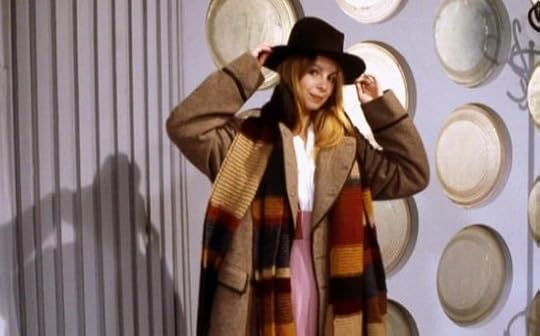
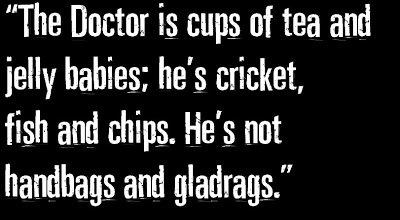 Yet during Steven Moffat’s shark-jumping time at the series’ helm, the pre-existing lore has gradually been overwritten, culminating in the arrival of Michelle Gomez’s Missy – the latest incarnation of the once (and hopefully future) Master – in Peter Capaldi’s first season and then the Time Lord general’s male-to-female regeneration at the end of his second. In-canon, this paves the way for a glut of transgender regenerations going forward. However, it doesn’t necessarily follow that incoming showrunner Chris Chibnall and his successors will run with the notion; they might ignore the concept altogether, leaving fans of the show to theorise about the bewildered looks on the faces of the Time Lord general’s colleagues who witnessed his bizarre renewal (which suggest that what just happened really shouldn’t have), and they won’t need to scratch their heads too hard when it comes to the Master. That renegade has, and always will be, a law unto himself when it comes to surviving beyond his twelfth regeneration. The trouble is, you could now say the same about the Doctor too now he’s already one regeneration past his allotted twelve.
Yet during Steven Moffat’s shark-jumping time at the series’ helm, the pre-existing lore has gradually been overwritten, culminating in the arrival of Michelle Gomez’s Missy – the latest incarnation of the once (and hopefully future) Master – in Peter Capaldi’s first season and then the Time Lord general’s male-to-female regeneration at the end of his second. In-canon, this paves the way for a glut of transgender regenerations going forward. However, it doesn’t necessarily follow that incoming showrunner Chris Chibnall and his successors will run with the notion; they might ignore the concept altogether, leaving fans of the show to theorise about the bewildered looks on the faces of the Time Lord general’s colleagues who witnessed his bizarre renewal (which suggest that what just happened really shouldn’t have), and they won’t need to scratch their heads too hard when it comes to the Master. That renegade has, and always will be, a law unto himself when it comes to surviving beyond his twelfth regeneration. The trouble is, you could now say the same about the Doctor too now he’s already one regeneration past his allotted twelve.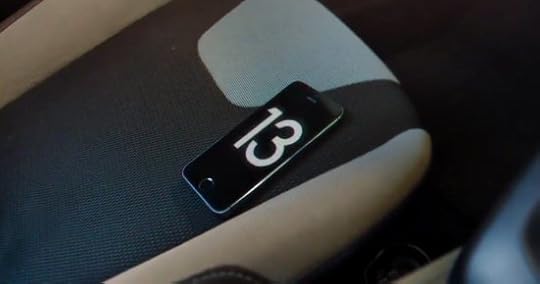
Those in favour of a female lead tend to stress the success of Missy, and I can’t think of a single negative thing to say about her character. But there’s the rub for me: it’s her character. She is not the Master. Not anymore. Even the name has had to change in her case. And so whilst Missy is a entrancing character, an oncoming storm with her very own umbrella, and Michelle Gomez’s performance is nothing short of phenomenal, all that links her to the scoundrel first played so very well by Roger Delgado are her feelings towards the Doctor - feelings that could quite easily have been transposed onto another, hitherto-unseen Time Lady without trashing the Master’s legacy.

But, of course, it’s Doctor Who, and whatever argument I or anyone else might make against the fluidity of Gallifreyan gender, its paucity could be exposed by anyone who’d care to point out that the show has always thrived on change, particularly changes that mirror ever-changing times and attitudes, and it’s never let little things like contradicting its first few decades get in the way. In the end, it’s all made-up, and as such can change as much it needs to stay fresh and retain its audience. The question is, then, would a female Doctor be a change too far for lifelong viewers like me? Remember, we wouldn’t be merely talking about creating a Euros Holmes, here - we’d be talking about making Sherlock Shirley. About Captain Jane T Kirk. About Clara Kent / Superwoman. About Opti-miss Prime. About Janet (“Jan”) Solo.
You get the idea.
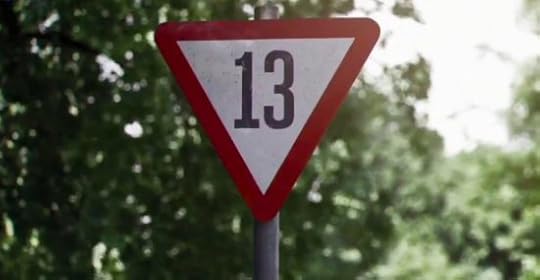
As you might guess, I think it would be fatal. I don’t think that the Doctor - a fifty-something-year-old character in real world terms - could go through such a fundamental reimagining and still be the same character that we know and love. As different as his thirteen lives have been (his recently discovered “War Doctor” incarnation in particular), they are nonetheless palpably the same man; the so-called “Ninth”, “Tenth” and “Eleventh” Doctors particularly so. Detractors are quick to point out that the Time Lord’s first thirteen iterations have all been white Brits, as if it’s some vast bigoted conspiracy on the Beeb’s part, but it’s simply because white Brits tend to fit the part. The Doctor is cups of tea and jelly babies; he’s cricket, fish and chips. He’s not handbags and gladrags – that’s Iris Wildthyme’s remit, and any attempt at a female Doctor could only ever hope to be a poor but mainstream imitation of her.
When it really comes down to it though, my anti-female Doctor sentiments are really borne of two completely illogical feelings, and I suspect it’s the same for many other long-term followers of the show. The first is that, lack he is for a lot of fans, the Doctor’s something of a role model for me – a wacky, zany, dazzling figure to idolise and aspire to. And, whilst there’s nothing to stop a man having a female role model, I really couldn’t imagine switching my brown pin-stripe suit or black leather jacket for a frock or a blouse. You may scoff at such sentiments in a near-middle-aged man, but transpose that onto the playground level: thousands if not millions of disenchanted, confused little boys wondering what in the blue hell has happened to their hero. Yes, many little girls might be drawn to the show as a direct result of having a female Doctor, but far fewer, I reckon, than the young boys that would be driven away.
The second reason, as silly as it sounds, is that I’d be profoundly uncomfortable if the actress cast was hot. Having watched an eclectic assortment of predominantly old men play the role throughout my life, the prospect of actually fancying the Doctor is too much to get past for me. I would imagine that this feeling cuts both ways, too – fans who’ve lusted after Tennant and Smith, even the more weathered Capaldi, might balk at the notion of a sudden sex change for the exact opposite reason. The fifty-something solicitor that I share an office with certainly does – she rants about this “ludicrous” female Doctor notion more than I do (though she will chunter about anything given the chance. You should hear her do half an hour on Taylor Wimpey’s Grount Rent Review Assistance Scheme.)
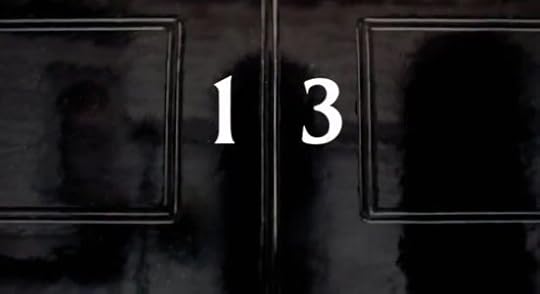
I do think a Doctor of any colour could work well, though, but the actor would need to possess that innate, unfathomable “Doctorishness” that’s commensurate with the role. Readers of my old website may recall that I championed Patterson Joseph as a potential David Tennant replacement back when his departure was announced, because he has that very quality with a touch of steel to boot. David Harewood, on the other hand, whose abovementioned statement foreshadowed his throwing his hat in the ring, doesn’t have that elusive “Doctorish” quality in my view – he can thoroughly convince as a kick-ass Friar Tuck or a big, imposing Martian Manhunter, but I can’t see him at the TARDIS’s helm. When I think of the next Doctor, I think of actors like Endeavour’s Shaun Evans (brilliant – and ginger); Death in Paradise’s Kris Marshall (fantastic – and ginger); Versailles’ mercurial Alexander Vlahos (could dye his hair ginger); even Rowan Atkinson (peerless – not ginger; not all that much hair at all nowadays, really). To those who scoff at the suggestion of the Comic Relief’s Doctor canonical casting, watch Maigret. The former Blackadder and Mr Bean star has definitely got the acting chops for the part. He’d be insanely good.
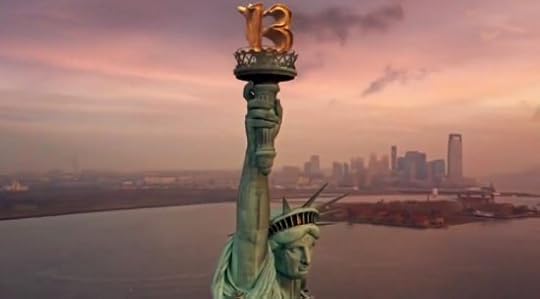
And so, as open-minded as I’d like to think I am, I don’t think that I’ll be able to bring myself to watch the series again should the Doctor turn into a woman, let alone write about it. The prospect of a heavily-bearded Susan turning up as a bloke with her mate, the moustache-twirling, former Time Lord president Romano would just be too much. I would perhaps consider watching a completely new, “unbound” reboot of the show with a female Doctor from the start (it’s been done before in the audio medium), maybe even one that hits the ground running without showing a Capaldi-to-female regeneration that there’d be no retconning, but I’m of the firm view that the Doctor in the series that’s been running on and off since 1963 should remain inviolate - it’s fans deserve that much. I fear that if the incoming production team have indeed succumbed to what must have felt like overwhelming media pressure to cast a woman as the Doctor, I won’t be the only one tuning out. For every new fan they’d gain, I reckon they’d lose at least a handful of long-standing ones.

Tomorrow we find out.
Published on July 15, 2017 02:20
Rants | Unlucky for Some
 There was once a time when the prospect of a new Doctor in Doctor Who sparked great excitement in me. Now it’s more like dread. With the media and bookmakers seemingly intent on the Time Lord becoming a Time Lady, the series finds itself on the edge of a precipice even more precarious than the one from which it fell in 1989. Only this time, I fear that there may be no clawing its way back from the wilderness pit – not with its thirty-five-season legacy in tact, anyway.
There was once a time when the prospect of a new Doctor in Doctor Who sparked great excitement in me. Now it’s more like dread. With the media and bookmakers seemingly intent on the Time Lord becoming a Time Lady, the series finds itself on the edge of a precipice even more precarious than the one from which it fell in 1989. Only this time, I fear that there may be no clawing its way back from the wilderness pit – not with its thirty-five-season legacy in tact, anyway.
I couldn’t disagree more with those such as Billie Piper, who claims that it would be a “snub” for another man to be cast as the Doctor, or particularly Supergirl star David Harewood, who has recently said that the new Doctor “has to be” black or female. Such comments only serve to fuel positive discrimination – as always, the best actor for the role should be cast. And here’s the thing: the best actor for the role “has to be” male, because the Doctor’s male - despite Grand Moff Steven’s subversive attempts to lay groundwork to the contrary.
I say that, then pause, frowning. Is he though? I don’t think it’s ever been made explicit that the Doctor is actually male. Hell, he’s only half-human at best. In fact, I’m pretty sure that he’s made at least one emphatic statement that he is not “a man,” but without the time to watch everything again (and it’s been a while since I watched anything, mind), I can’t be sure, but I’m still pretty confident that when making such a statement he would’ve been offended by being tarred with the human brush, rather than the more specific male human one. Moreover, the pronouns consistently used to describe “him” over the years, not to mention Cassandra’s rather droll comments about his “rarely used” parts when she invaded his body in “New Earth”, certainly suggest that the Doctor is, indeed, male. It doesn’t prove it beyond reasonable doubt, I’ll concede, but on the balance of probabilities is good enough for me.

Now back in the bad old, good old days, Doctor Who always drew an unambiguous line between Gallifreyan genders. The Doctor had a granddaughter – one with an unmistakably female name – and later another Gallifreyan female companion. Every Time Lord that appeared in the classic series regenerated into another Time Lord, and every Time Lady into another Time Lady. During his tenure as script editor, the late great Douglas Adams even distinguished the two Gallifreyan genders’ methods of regeneration, penning a scene in which Romana casually tried on bodies before finally settling for one that looked uncannily like actress Lalla Ward, suggesting that Time Ladies possess a far greater degree of control over their carefully engineered biology than their male counterparts. Fair dues, Adams was ripping the piss out of how some women might agonise over what to wear, which certainly doesn’t make him the greatest authority to quote in support of my stance, but, like it or not, it still counts.

 Yet during Steven Moffat’s shark-jumping time at the series’ helm, the pre-existing lore has gradually been overwritten, culminating in the arrival of Michelle Gomez’s Missy – the latest incarnation of the once (and hopefully future) Master – in Peter Capaldi’s first season and then the Time Lord general’s male-to-female regeneration at the end of his second. In-canon, this paves the way for a glut of transgender regenerations going forward. However, it doesn’t necessarily follow that incoming showrunner Chris Chibnall and his successors will run with the notion; they might ignore the concept altogether, leaving fans of the show to theorise about the bewildered looks on the faces of the Time Lord general’s colleagues who witnessed his bizarre renewal (which suggest that what just happened really shouldn’t have), and they won’t need to scratch their heads too hard when it comes to the Master. That renegade has, and always will be, a law unto himself when it comes to surviving beyond his twelfth regeneration. The trouble is, you could now say the same about the Doctor too now he’s already one regeneration past his allotted twelve.
Yet during Steven Moffat’s shark-jumping time at the series’ helm, the pre-existing lore has gradually been overwritten, culminating in the arrival of Michelle Gomez’s Missy – the latest incarnation of the once (and hopefully future) Master – in Peter Capaldi’s first season and then the Time Lord general’s male-to-female regeneration at the end of his second. In-canon, this paves the way for a glut of transgender regenerations going forward. However, it doesn’t necessarily follow that incoming showrunner Chris Chibnall and his successors will run with the notion; they might ignore the concept altogether, leaving fans of the show to theorise about the bewildered looks on the faces of the Time Lord general’s colleagues who witnessed his bizarre renewal (which suggest that what just happened really shouldn’t have), and they won’t need to scratch their heads too hard when it comes to the Master. That renegade has, and always will be, a law unto himself when it comes to surviving beyond his twelfth regeneration. The trouble is, you could now say the same about the Doctor too now he’s already one regeneration past his allotted twelve.
Those in favour of a female lead tend to stress the success of Missy, and I can’t think of a single negative thing to say about her character. But there’s the rub for me: it’s her character. She is not the Master. Not anymore. Even the name has had to change. And so whilst Missy is a entrancing character, an oncoming storm with her very own umbrella, and Michelle Gomez’s performance is nothing short of phenomenal, all that links her to the scoundrel first played so very well by Roger Delgado are her feelings towards the Doctor - feelings that could quite easily have been transposed onto another, hitherto-unseen Time Lady without trashing the Master’s legacy.

But, of course, it’s Doctor Who, and whatever argument I or anyone else might make against the fluidity of Gallifreyan gender, its paucity could be uncovered by anyone who’d care to point out that the show has always thrived on change, particularly changes that mirror ever-changing times and attitudes, and it’s never let little things like contradicting its first few decades get in the way. In the end, it’s all made-up, and as such can change as much it needs to stay fresh and retain its audience. The question is, then, would a female Doctor be a change too far for lifelong viewers? Remember, we wouldn’t be merely talking about creating a Euros Holmes, here - we’d be talking about making Sherlock Shirley. About Captain Jane T Kirk. About Clara Kent / Superwoman. About Opti-miss Prime. About Janet (“Jan”) Solo.
You get the idea.

As you might guess, I think it would be fatal. I don’t think that the Doctor, a fifty-something-year-old character in real world terms, could go through such a fundamental reimagining and still be the same character that we know and love. As different as his thirteen lives have been (his recently discovered ninth “War Doctor” incarnation in particular), they are nonetheless palpably the same man; the so-called “Ninth”, “Tenth” and “Eleventh” Doctors particularly so. Detractors are quick to point out that the Time Lord’s first thirteen iterations have all been white Brits, as if it’s some vast bigoted conspiracy, but it’s simply because white Brits tend to fit the part. The Doctor is cups of tea and jelly babies; he’s cricket, fish and chips. He’s not handbags and gladrags – that’s Iris Wildthyme’s remit, and any attempt at a female Doctor could only ever hope to be a poor but mainstream imitation of her.
When it really comes down to it though, my anti-female Doctor sentiments are really borne of two completely illogical feelings. The first is that, lack he is for a lot of fans of the series, the Doctor’s something of a role model – a wacky, zany, dazzling figure to idolise and aspire to. And, whilst there’s nothing to stop a man having a female role model, I really couldn’t imagine switching my brown pin-stripe suit or black leather jacket for a frock or a blouse. The second, as silly as it sounds, is that I’d be profoundly uncomfortable if the actress cast was hot. Having watched an eclectic assortment of predominantly old men play the role throughout my life, the prospect of actually fancying the Doctor is too much to get past for me. I would imagine that this feeling cuts both ways, too – fans who’ve lusted after Tennant and Smith, even the more weathered Capaldi, might balk at the notion of a sudden sex change for the exact opposite reason. The fifty-something solicitor that I share an office with certainly does – she rants about this “ludicrous” female Doctor notion more than I do (though she will chunter about anything given the chance).

I do think a Doctor of any colour could work well, though, but the actor would need to possess that innate, unfathomable “Doctorishness” that’s commensurate with the role. Readers of my old website may recall that I championed Patterson Joseph as a potential David Tennant replacement back when his departure was announced, because he has that very quality with a touch of steel to boot. David Harewood, on the other hand, whose abovementioned statement foreshadowed his throwing his hat in the ring, doesn’t have that elusive “Doctorish” quality in my view – he can thoroughly convince as a kick-ass Friar Tuck or a big, imposing Martian Manhunter, but I can’t see him at the TARDIS’s helm. When I think of the next Doctor, I think of actors like Endeavour’s Shaun Evans (brilliant – and ginger); Death in Paradise’s Kris Marshall (fantastic – and ginger); Versailles’ mercurial Alexander Vlahos (could dye his hair ginger); even Rowan Atkinson (peerless – not ginger; not all that much hair at all nowadays, really). To those who scoff at the suggestion of the Comic Relief’s Doctor canonical casting, watch Maigret. The former Blackadder and Mr Bean star has definitely got the acting chops for the part. He’d be insanely good.

And so, as open-minded as I’d like to think I am, I don’t think that I’ll be able to bring myself to watch the series again should the Doctor turn into a woman, let alone write about it. The prospect of a heavily-bearded Susan turning up as a bloke with her mate, the moustache-twirling, former Time Lord president Romano would just be too much. I’d certainly consider watching a completely new, “unbound” reboot of the show with a female Doctor from the start, but I’m of the firm view that the Doctor in the series that’s been running on and off since 1963 should remain inviolate. I fear that if the incoming production team have indeed succumbed to what must have felt like overwhelming media pressure to cast a woman as the Doctor, I won’t be the only one tuning out. For every new fan they’d gain, I reckon they’d lose at least a handful of long-standing ones.

Tomorrow we find out.
Published on July 15, 2017 02:20
February 21, 2017
Film Review | The LEGO Batman Movie directed by Chris McKay
I never reviewed 2015’s LEGO Movie as, shortly after its release, I read a review that quoted the writer’s child, whose one-line offering encapsulated my own views far more concisely than I could have. As a huge fan of Batman and DC as well as LEGO, though, I’ve got plenty to say about this year’s LEGO Batman Movie. Truth be told, I’ve been looking forward to it as much as
T2
or even
The Last Jedi
.
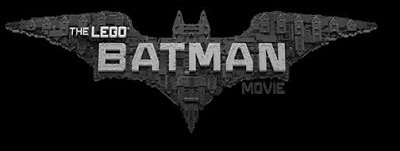 The LEGO Batman Movie is far from being the brick-built Caped Crusader’s first on-screen outing though. Since the original, straight-to-home video LEGO Batman movie (DC Superheroes Unite), he’s made countless home video appearances, mostly alongside his Justice League compatriots (and all conveniently to be found on DVDs displayed at the end of most supermarket aisles, right next to The LEGO Batman Movie sets and minifigure packets), before playing a major – and arguably show-stealing role - on the silver screen in The LEGO Movie. Yet The LEGO Batman Movie is the first not only to properly showcase the ninety-year-old DC icon, but also to celebrate him, and everything that he is – and could never be. It’s as if all the triumph and tragedy of the Dark Knight has been distilled and exaggerated to such a degree that everyone from the three-year-old moviegoer to his reluctant granny will instantly connect with the character.
The LEGO Batman Movie is far from being the brick-built Caped Crusader’s first on-screen outing though. Since the original, straight-to-home video LEGO Batman movie (DC Superheroes Unite), he’s made countless home video appearances, mostly alongside his Justice League compatriots (and all conveniently to be found on DVDs displayed at the end of most supermarket aisles, right next to The LEGO Batman Movie sets and minifigure packets), before playing a major – and arguably show-stealing role - on the silver screen in The LEGO Movie. Yet The LEGO Batman Movie is the first not only to properly showcase the ninety-year-old DC icon, but also to celebrate him, and everything that he is – and could never be. It’s as if all the triumph and tragedy of the Dark Knight has been distilled and exaggerated to such a degree that everyone from the three-year-old moviegoer to his reluctant granny will instantly connect with the character.
ROBIN: Does Batman live in Bruce Wayne’s basement?
BATMAN: No, Bruce Wayne lives in Batman’s attic!
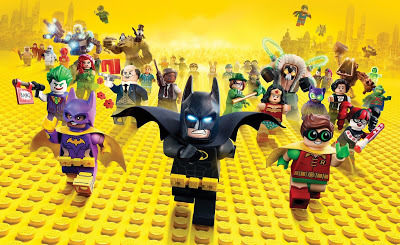
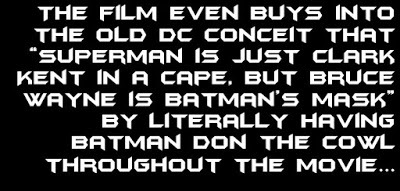 This movie’s Batman is, as he should be, a one-man crime-fighting machine. It’s also implicit that he lost his parents in his youth, but without LEGO having to terrify its youngest viewers with unnecessary flashbacks to their murder. The film even buys into the old DC conceit that “Superman is just Clark Kent in a cape, but Bruce Wayne is Batman’s mask” by literally having Batman don the cowl throughout the movie (unless Alfred forces him to take it off in order to masquerade as a playboy billionaire). Where the LEGO Batman differs from his comic book and counterpart though is in his attitude. For a man who “gets up at four in the afternoon every day to pump iron” so that he can keep the city safe, he’s bombastically selfish and arrogant – traits upon which most of the movie’s comedy is built. From his opening voiceover dissing Superman to his (priceless) claim of having nine abs and his willingness to use Dick Grayson as “expendable” cannon fodder, Will Arnett’s heavy metal, beat-boxin’ Batman is a study in narcissism. The man’s in the wrong trade - he’s practically a walking WWE promo.
This movie’s Batman is, as he should be, a one-man crime-fighting machine. It’s also implicit that he lost his parents in his youth, but without LEGO having to terrify its youngest viewers with unnecessary flashbacks to their murder. The film even buys into the old DC conceit that “Superman is just Clark Kent in a cape, but Bruce Wayne is Batman’s mask” by literally having Batman don the cowl throughout the movie (unless Alfred forces him to take it off in order to masquerade as a playboy billionaire). Where the LEGO Batman differs from his comic book and counterpart though is in his attitude. For a man who “gets up at four in the afternoon every day to pump iron” so that he can keep the city safe, he’s bombastically selfish and arrogant – traits upon which most of the movie’s comedy is built. From his opening voiceover dissing Superman to his (priceless) claim of having nine abs and his willingness to use Dick Grayson as “expendable” cannon fodder, Will Arnett’s heavy metal, beat-boxin’ Batman is a study in narcissism. The man’s in the wrong trade - he’s practically a walking WWE promo.
Yet inside, he’s still the child that lost his parents. He throws actual tantrums rolling around on the floor (his “No, no, no, no…” perfectly in tune to the old TV series’ famous theme), gets put in time-out, makes himself laugh with childish passwords (“IRONMANSUCKS” and “ALFREDDBUTLER”), and eschews any meaningful connection to anyone to avoid the pursuant hurt. I love in particular the humorous insight that the movie offers into Batman’s – not Bruce Wayne’s, mind, Batman’s – home life. He gets in from “work”, slips into something more comfortable (still wearing his cowl, obviously), then sits down to laugh at a romantic film, which he seems to genuinely believe is a comedy. It’s brilliant. The film straddles the fine line between tragedy and humour dexterously, somehow portraying a tragic character as a hilarious one without really altering any of his core characteristics.
ROBIN: Kids call me Dick.
BATMAN: Kids can be so cruel.
On the hero side of the divide, most of the heart and humour is borne of Batman’s relationships with his bumbling ward, Dick Grayson (Robin), his loyal butler – and surrogate father – Alfred, and the newly-minted Commissioner Gordon… Barbara Gordon. The first admires him, the second loves him, and the third thinks that she’s better than him (and what’s funny is, she actually is – just look at the stats she’s got to prove it!) Every scene manages to be both witty and insightful, making the audience laugh while progressing the narrative and, more often than not, making light of hitherto inviolate comic book lore. Take Batman telling Robin to use the “dark parts” of his [bright yellow, red and green!] costume to blend into the night, for instance - it leads into Barbara promptly spotting them both, reinforcing Batman’s ineptitude in her eyes. Similarly, Batman’s aggressive, unforgiving “encouragement” of Robin as he infiltrates Superman’s Fortress of Solitude leads into a delectable scene in which a devastated Batman finds the entire Justice League – not just the big guns, but Hawkman and Hawkgirl, Green Arrow, the whole lot of ’em – having a party without him.
Villain-wise, Seth Grahame-Smith’s narrative blossoms out of Batman’s crippling limitations as a human being – he’s even an inconsiderate adversary, it seems. Poor old Joker, who wants nothing more than for Batman to just acknowledge his status as the Dark Knight’s foremost foe, finds himself casually spurned in favour of the likes of Bane and Superman –“He’s not even a bad guy!” protests the Clown Prince of Crime – as the Caped Crusader likes to “fight around”. So unfurls a plot that sees the Joker willingly committed to the Phantom Zone so that he may return with a legion of horribles, all intent on putting Batman and his precious Gotham City to the sword.
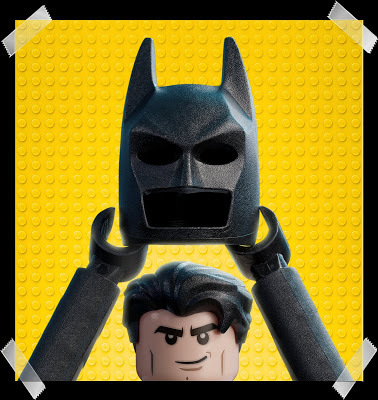 An action-packed but thoroughly riotous mêlée ensues, and so Batman has to turn to his accidentally-adopted “son”; his war-dog of a butler dressed as the 60s’ Batman; Barbara “Batgirl” Gordon; and, best of all, all the scum and villainy of Gotham City in order to battle the Joker’s forces of darkness. And what a force they are - Voldemort, Sauron, King Kong, the Wicked Witch of the West, even the Daleks. Watching The LEGO Batman Movie made me realise how fortunate the kids of today are – they’ve got it
An action-packed but thoroughly riotous mêlée ensues, and so Batman has to turn to his accidentally-adopted “son”; his war-dog of a butler dressed as the 60s’ Batman; Barbara “Batgirl” Gordon; and, best of all, all the scum and villainy of Gotham City in order to battle the Joker’s forces of darkness. And what a force they are - Voldemort, Sauron, King Kong, the Wicked Witch of the West, even the Daleks. Watching The LEGO Batman Movie made me realise how fortunate the kids of today are – they’ve got it made built. Yeah, they might have to put up with the likes of Brexit; Trump; and the wacky notion that a female Doctor Who is not merely OK, but somehow inevitable; but, on the flip-side, they get to see Batman fighting Daleks and enjoy some mind-blowing merch. The movie’s tie-in sets are impressive enough (my eldest daughter opted for set 7092: Catwoman Cycle Chase, not to get the Catwoman and Batgirl minifigures, but for the hilarious and endearing Robin, whom she seems to be half in love with), but the twenty-strong minifigure series is something else altogether. Lobster lovin’ Batman and Catman are joined by allies and adversaries both obscure and nefarious; like the film, it’s a celebration of ninety years of Batman – even the camp and concealed bits. The LEGO Batman Movie is less a film, more an event.
Building upon the spirit of 2015’s LEGO Movie, 2017’s LEGO Batman Movie takes the franchise to a whole new level. Photo-real animation brings to life a story that’s as surprising as it is funny, and as emblematic of both the LEGO and Batman properties as anything possibly could be. ’Twas surely for this film that the phrase “best of both worlds” was coined…
 The LEGO Batman Movie is far from being the brick-built Caped Crusader’s first on-screen outing though. Since the original, straight-to-home video LEGO Batman movie (DC Superheroes Unite), he’s made countless home video appearances, mostly alongside his Justice League compatriots (and all conveniently to be found on DVDs displayed at the end of most supermarket aisles, right next to The LEGO Batman Movie sets and minifigure packets), before playing a major – and arguably show-stealing role - on the silver screen in The LEGO Movie. Yet The LEGO Batman Movie is the first not only to properly showcase the ninety-year-old DC icon, but also to celebrate him, and everything that he is – and could never be. It’s as if all the triumph and tragedy of the Dark Knight has been distilled and exaggerated to such a degree that everyone from the three-year-old moviegoer to his reluctant granny will instantly connect with the character.
The LEGO Batman Movie is far from being the brick-built Caped Crusader’s first on-screen outing though. Since the original, straight-to-home video LEGO Batman movie (DC Superheroes Unite), he’s made countless home video appearances, mostly alongside his Justice League compatriots (and all conveniently to be found on DVDs displayed at the end of most supermarket aisles, right next to The LEGO Batman Movie sets and minifigure packets), before playing a major – and arguably show-stealing role - on the silver screen in The LEGO Movie. Yet The LEGO Batman Movie is the first not only to properly showcase the ninety-year-old DC icon, but also to celebrate him, and everything that he is – and could never be. It’s as if all the triumph and tragedy of the Dark Knight has been distilled and exaggerated to such a degree that everyone from the three-year-old moviegoer to his reluctant granny will instantly connect with the character.ROBIN: Does Batman live in Bruce Wayne’s basement?
BATMAN: No, Bruce Wayne lives in Batman’s attic!

 This movie’s Batman is, as he should be, a one-man crime-fighting machine. It’s also implicit that he lost his parents in his youth, but without LEGO having to terrify its youngest viewers with unnecessary flashbacks to their murder. The film even buys into the old DC conceit that “Superman is just Clark Kent in a cape, but Bruce Wayne is Batman’s mask” by literally having Batman don the cowl throughout the movie (unless Alfred forces him to take it off in order to masquerade as a playboy billionaire). Where the LEGO Batman differs from his comic book and counterpart though is in his attitude. For a man who “gets up at four in the afternoon every day to pump iron” so that he can keep the city safe, he’s bombastically selfish and arrogant – traits upon which most of the movie’s comedy is built. From his opening voiceover dissing Superman to his (priceless) claim of having nine abs and his willingness to use Dick Grayson as “expendable” cannon fodder, Will Arnett’s heavy metal, beat-boxin’ Batman is a study in narcissism. The man’s in the wrong trade - he’s practically a walking WWE promo.
This movie’s Batman is, as he should be, a one-man crime-fighting machine. It’s also implicit that he lost his parents in his youth, but without LEGO having to terrify its youngest viewers with unnecessary flashbacks to their murder. The film even buys into the old DC conceit that “Superman is just Clark Kent in a cape, but Bruce Wayne is Batman’s mask” by literally having Batman don the cowl throughout the movie (unless Alfred forces him to take it off in order to masquerade as a playboy billionaire). Where the LEGO Batman differs from his comic book and counterpart though is in his attitude. For a man who “gets up at four in the afternoon every day to pump iron” so that he can keep the city safe, he’s bombastically selfish and arrogant – traits upon which most of the movie’s comedy is built. From his opening voiceover dissing Superman to his (priceless) claim of having nine abs and his willingness to use Dick Grayson as “expendable” cannon fodder, Will Arnett’s heavy metal, beat-boxin’ Batman is a study in narcissism. The man’s in the wrong trade - he’s practically a walking WWE promo.Yet inside, he’s still the child that lost his parents. He throws actual tantrums rolling around on the floor (his “No, no, no, no…” perfectly in tune to the old TV series’ famous theme), gets put in time-out, makes himself laugh with childish passwords (“IRONMANSUCKS” and “ALFREDDBUTLER”), and eschews any meaningful connection to anyone to avoid the pursuant hurt. I love in particular the humorous insight that the movie offers into Batman’s – not Bruce Wayne’s, mind, Batman’s – home life. He gets in from “work”, slips into something more comfortable (still wearing his cowl, obviously), then sits down to laugh at a romantic film, which he seems to genuinely believe is a comedy. It’s brilliant. The film straddles the fine line between tragedy and humour dexterously, somehow portraying a tragic character as a hilarious one without really altering any of his core characteristics.
ROBIN: Kids call me Dick.
BATMAN: Kids can be so cruel.
On the hero side of the divide, most of the heart and humour is borne of Batman’s relationships with his bumbling ward, Dick Grayson (Robin), his loyal butler – and surrogate father – Alfred, and the newly-minted Commissioner Gordon… Barbara Gordon. The first admires him, the second loves him, and the third thinks that she’s better than him (and what’s funny is, she actually is – just look at the stats she’s got to prove it!) Every scene manages to be both witty and insightful, making the audience laugh while progressing the narrative and, more often than not, making light of hitherto inviolate comic book lore. Take Batman telling Robin to use the “dark parts” of his [bright yellow, red and green!] costume to blend into the night, for instance - it leads into Barbara promptly spotting them both, reinforcing Batman’s ineptitude in her eyes. Similarly, Batman’s aggressive, unforgiving “encouragement” of Robin as he infiltrates Superman’s Fortress of Solitude leads into a delectable scene in which a devastated Batman finds the entire Justice League – not just the big guns, but Hawkman and Hawkgirl, Green Arrow, the whole lot of ’em – having a party without him.
Villain-wise, Seth Grahame-Smith’s narrative blossoms out of Batman’s crippling limitations as a human being – he’s even an inconsiderate adversary, it seems. Poor old Joker, who wants nothing more than for Batman to just acknowledge his status as the Dark Knight’s foremost foe, finds himself casually spurned in favour of the likes of Bane and Superman –“He’s not even a bad guy!” protests the Clown Prince of Crime – as the Caped Crusader likes to “fight around”. So unfurls a plot that sees the Joker willingly committed to the Phantom Zone so that he may return with a legion of horribles, all intent on putting Batman and his precious Gotham City to the sword.
 An action-packed but thoroughly riotous mêlée ensues, and so Batman has to turn to his accidentally-adopted “son”; his war-dog of a butler dressed as the 60s’ Batman; Barbara “Batgirl” Gordon; and, best of all, all the scum and villainy of Gotham City in order to battle the Joker’s forces of darkness. And what a force they are - Voldemort, Sauron, King Kong, the Wicked Witch of the West, even the Daleks. Watching The LEGO Batman Movie made me realise how fortunate the kids of today are – they’ve got it
An action-packed but thoroughly riotous mêlée ensues, and so Batman has to turn to his accidentally-adopted “son”; his war-dog of a butler dressed as the 60s’ Batman; Barbara “Batgirl” Gordon; and, best of all, all the scum and villainy of Gotham City in order to battle the Joker’s forces of darkness. And what a force they are - Voldemort, Sauron, King Kong, the Wicked Witch of the West, even the Daleks. Watching The LEGO Batman Movie made me realise how fortunate the kids of today are – they’ve got it Building upon the spirit of 2015’s LEGO Movie, 2017’s LEGO Batman Movie takes the franchise to a whole new level. Photo-real animation brings to life a story that’s as surprising as it is funny, and as emblematic of both the LEGO and Batman properties as anything possibly could be. ’Twas surely for this film that the phrase “best of both worlds” was coined…
Published on February 21, 2017 12:32
February 16, 2017
Rants | The "News About Your Ticket" E-mail from the National Lottery's Cruelty Department
 Waking up on a Sunday morning to an e-mail telling us that we’ve won the National Lottery is a surprisingly common occurrence in our house. Yet here we are, still not millionaires.
Waking up on a Sunday morning to an e-mail telling us that we’ve won the National Lottery is a surprisingly common occurrence in our house. Yet here we are, still not millionaires.Rather than simply sending players an e-mail to advise them that they’ve won a £25.00 prize (just think what dastardly cyber criminals could get up to were they to intercept an e-mail telling you that you’ve got that sort of dosh on its way into your bank account…), instead the National Lottery send their players a cryptic message telling them that they have “some news” about their ticket from the previous evening’s draw, and that they are advised to sign in to their accounts as soon as they can for more information.
The first time this happened to us, I was convinced that we’d hit the jackpot. I spent hours trying to log into our account, but for some reason the page wouldn’t load. Eventually the penny dropped that the lottery is - technically - gambling, albeit gambling of an unrealistic sort, and as such the site was blocked by our parental controls, the password for which eluded me for a microcosmic eternity. Later that day, I finally managed to log in to our account to find out about our £25.00 prize. I was actually annoyed – no, incensed – that we were £25.00 better off. This preposterous, nonsensical, needlessly clandestine National Lottery notification system had left me beside myself with rage about actually receiving a minor windfall – something that’s almost universally considered to be “a good thing”. What should have been the cause for minor celebration soon became “another Cineworld”.
Since that day a few years ago, we’ve had around £200.00’s worth of £25.00 wins, the most recent of which followed last Saturday’s draw. Overall, that’s the equivalent of a week’s food and warmth for a family of four, a decent little smart TV for the bedroom, a top-tier LEGO set, a large Transformers Masterpiece or – if I were a smoker – three packets of cigarettes. And yet, every little win has felt like a digital slap in the face; it’s as if each £25.00 prize came attached to an invisible clown, whose mocking laughter drowned out anything positive that we could possibly have done with the extra cash.
National Lottery, you don’t need to e-mail me the details of the account that you’re paying our £25.00 into. You don’t need to include any information that could lead to any sort of cyber security breach. All you need to say is “We’ve got some news about your ticket from the draw on [date]. Congratulations – a prize of £25.00 has been paid into your bank account.” My reaction to such an e-mail would be along the lines of - “Get in!”, “Nice one!”, or - if I were feeling even remotely Alan Partridgey - “Back of the net!” To be clear, and for the avoidance of any doubt, that would be infinitely preferable to my involuntary response to your current e-mail.
Larger prizes, such as those with four figures before the decimal point, as opposed to overall, then yeah – a login might be prudent. But please, please, please - stop making us think we’ve won the damned jackpot when in fact we’ve not even won enough to pay for a modest meal out, because no matter how many times I get your accursed e-mail with its “news”, and no matter how absurd the odds of us hitting the jackpot are, there’s still always an unwelcome little pang of excitement that follows receipt of each cruel little e-mail – a pang that quickly blossoms into unbridled fury once I login and realise that you’ve done it to us again.
Published on February 16, 2017 13:51
LEGO Ideas Review | 21304 Doctor Who
 Many of the sets released under the LEGO Ideas umbrella have been exactly that - LEGO ideas dreamt to life by imaginative builders at home. They’ve uploaded their ideas to the LEGO Ideas website, gathered support, and then, upon gathering a quorum of supporters, LEGO designers have turned their idea into an on-shelf reality. However, when it comes to certain sets, “LEGO Ideas” is a misnomer. Every builder who follows
Doctor Who
has had the same impossible idea of making a LEGO TARDIS - but only one has managed to make the dimensionally-transcendental time and space machine materialise in building block form. This set is less a “LEGO Idea” and more a “LEGO Bloody Miracle”.
Many of the sets released under the LEGO Ideas umbrella have been exactly that - LEGO ideas dreamt to life by imaginative builders at home. They’ve uploaded their ideas to the LEGO Ideas website, gathered support, and then, upon gathering a quorum of supporters, LEGO designers have turned their idea into an on-shelf reality. However, when it comes to certain sets, “LEGO Ideas” is a misnomer. Every builder who follows
Doctor Who
has had the same impossible idea of making a LEGO TARDIS - but only one has managed to make the dimensionally-transcendental time and space machine materialise in building block form. This set is less a “LEGO Idea” and more a “LEGO Bloody Miracle”.
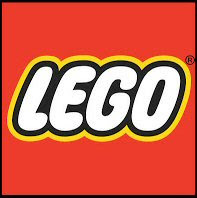 Subject as they are to the physical laws of a non-fictional universe, I’d always failed to shape LEGO pieces into a model bigger on its inside than its out. A labyrinthine, scaled interior could easily be built inside a blue box the size of most LEGO cities, just as easily as a minifigure-scaled police box could comfortably house a brace of minifigures - but little more. This left only a bitesize version of the TV producers’ approach: shove your minifigures into a tiny LEGO blue box, suspend your disbelief and pull ’em out again, finally setting them down in a separate interior. Not much fun, and not at all marketable.
Subject as they are to the physical laws of a non-fictional universe, I’d always failed to shape LEGO pieces into a model bigger on its inside than its out. A labyrinthine, scaled interior could easily be built inside a blue box the size of most LEGO cities, just as easily as a minifigure-scaled police box could comfortably house a brace of minifigures - but little more. This left only a bitesize version of the TV producers’ approach: shove your minifigures into a tiny LEGO blue box, suspend your disbelief and pull ’em out again, finally setting them down in a separate interior. Not much fun, and not at all marketable. An exercise in compromise as much as anything else, Andrew Clark’s wonderful creation stretches each of the above techniques as far it can to create a stunningly detailed hybrid model. The premise is inspired: you build a police box shell and a separate console room, opening out the former and attaching its sprawling form to the latter to create the illusion of a cavernous interior stretching out from the outer shell. Deft little flourishes like the inverted police-box detailing on the reverse of two of the TARDIS doors and the late Smith / Capaldi-era TARDIS wall on the opposing pair conspire to make the brick trickery pleasing, if still imperfect.
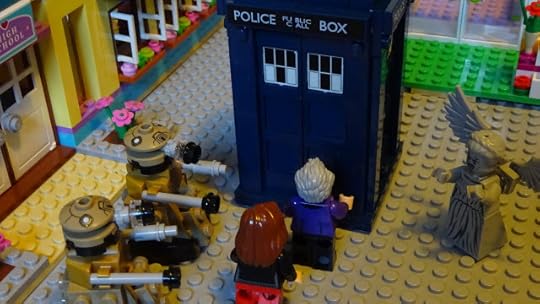
As I expected, the TARDIS exterior is my favourite part of the set - principally because it makes for such a stunning LEGO ornament. No part of the design has been fudged; each door panel is a separate component, there are no cost-cutting stickers to be applied, and two of the doors even open. Fair dues, they open outward, rather than inward; you have to take the top off and lift up at least two hinges to get them open; and, most significantly, they’re the wrong doors. Overall, though, it’s an acceptable trade-off when considering that the fully-opened capsule clicks comfortably onto the end of the console room’s ramp, giving us at least the illusion of being able to pass through the police box doors into the ship. As I can’t suggest a better alternative, it’d be more than a little churlish to complain.

 The console room itself is just as well-thought-out and detailed, though inevitably it lacks the forceful impression of the iconic exterior, which, save for the addition and removal of the odd accoutrement has remained much the same for more than half a century. Again, for me it’s the little touches that sell it: a working lever, custom pieces printed with Gallifreyan symbols. The design even reflects the current console room’s multi-level layout, with stairs leading down to the rest of the ship.
The console room itself is just as well-thought-out and detailed, though inevitably it lacks the forceful impression of the iconic exterior, which, save for the addition and removal of the odd accoutrement has remained much the same for more than half a century. Again, for me it’s the little touches that sell it: a working lever, custom pieces printed with Gallifreyan symbols. The design even reflects the current console room’s multi-level layout, with stairs leading down to the rest of the ship.The minifigures are a mixed bag, though. Matt Smith’s Doctor is the obvious standout as not only is he the spit of Eleven, but he also comes complete with a sonic screwdriver and fez. The latter doesn’t really work on his head, though, as it makes him look bald and leaves him with his alternative-expression face showing on the back of his head. This is especially frustrating as a custom-moulded composite hair and hat piece (as seen on many of the recent Disney and LEGO Batman Movie minifigures, for instance) could have remedied this. Peter Capaldi’s Doctor is less recognisable, clad as he is in an awful shade of purple (I’d have preferred him in a dark hoodie with a guitar), and whilst Clara’s outfit is convincing, her hairpiece is anything but. The Weeping Angel, however, is sublime in its terrifying simplicity, and the Daleks are nothing short of perfection. I’d had reservations about their design before I’d built them as I’d thought that a custom mould would have been in order for creations of their calibre, but that would have been at the expense of the sheer joy that comes with putting a couple of Daleks together out of nothing but existing bricks.
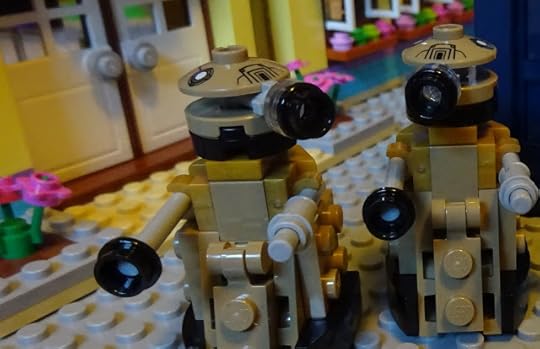
Another delight of this set is its packaging. The glossy box, whilst still cardboard, is sturdy and can be opened and closed without ruining it - it’s clearly intended to be a keeper. Similarly, the instructions are far from flimsy and are adorned with facts and features about the TV series as well as the set’s designer. The only flaw is the lack of numbered piece bags, which is most unusual for a set of this size and makes the build more laborious than I’ve become used to.
This mostly enchanting set’s greatest weakness, though, is its timing: it’s very much a Capaldi-era set, just as you’d expect it to be as he’s the incumbent Doctor. For me, this is a real put-off as, despite a Herculean effort, I’ve been unable to find any love for the TV series since The Day of the Doctor aired. I’d have been much more thrilled with a “grunge phase” interior and the Russell T Davies Doctors than I would those I associate with the new series’ nadir, and I dare say that there are those who’d have opted for white roundels and long-scarved minifigures, given the choice. This isn’t a criticism of the set per se; rather an acknowledgement of the fact that it really only serves to whet the appetite for a fully-fledged LEGO Doctor Who range: incarnations of the Doctor alone could sustain a decent minifigure series, never mind the various alien ships and structures which have the potential to rival the standard-setting Star Wars range. Watch this (time and) space...
This set has now been retired, but can still be found online and in stores for as little as half its original RRP - which I why I finally gave in and bought it.
Published on February 16, 2017 12:08
January 27, 2017
Book Review | T2: Trainspotting by Irvine Welsh
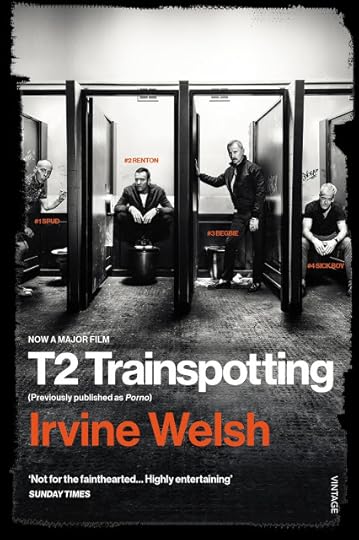 When my teacher training was in its death throes, I’d regularly cite either this book - then known as
Porno
- or the author’s earlier
Filth
as being my favourite reading material whenever the topic arose in workshops or seminars. Not because they were, you understand; just because it provoked either an amused or judgemental reaction, the achievement of which was just about the only reason for my continuing, sporadic attendances (the other being the continued receipt of my bursaries and loan instalments). The thing is though, both truly are superlative titles, and whilst I’m not one for favourites, Irvine Welsh’s 2002 sequel to both
Trainspotting
and
Glue
is perhaps the one book in his canon that showcases a little of everything that the Scots scribbler brings to the table - a ‘best of’, if you will, rather than an outright best.
When my teacher training was in its death throes, I’d regularly cite either this book - then known as
Porno
- or the author’s earlier
Filth
as being my favourite reading material whenever the topic arose in workshops or seminars. Not because they were, you understand; just because it provoked either an amused or judgemental reaction, the achievement of which was just about the only reason for my continuing, sporadic attendances (the other being the continued receipt of my bursaries and loan instalments). The thing is though, both truly are superlative titles, and whilst I’m not one for favourites, Irvine Welsh’s 2002 sequel to both
Trainspotting
and
Glue
is perhaps the one book in his canon that showcases a little of everything that the Scots scribbler brings to the table - a ‘best of’, if you will, rather than an outright best. It is nonetheless a very different beast to Trainspotting , most obviously because it is a novel in the traditional sense, with all the structure and plot threads that you’d expect thereto, rather than a series of snippets that are, by and large, capable of being enjoyed in isolation. Another significant difference is focus - Trainspotting will forever be synonymous with heroin, whereas in T2 it barely gets a mention, as most of its characters are now only partial to the peeve or a bit of ching. Indeed, as most would readily infer from the title, this book’s focus is the world of adult erotica, from Juice Terry’s stag movies shot in the upstairs of a Leith tavern, all the way up to the Cannes (Adult) Film Festival, and all the aspirant undergraduates in between.
 “In your twenties you can do it on looks, your thirties on personality, but in your forties you need cash or fame. Simple fucking mathematics.”
“In your twenties you can do it on looks, your thirties on personality, but in your forties you need cash or fame. Simple fucking mathematics.”And whilst many paperback editions of the book are emblazoned with the same names burned into Britain’s collective consciousness thanks to the fame that they found through the 1996 Trainspotting movie’s ubiquitous mock-identity parade posters, T2 actually focuses on just one of them: Simon David Williamson, the abovementioned ‘Sick Boy’. Whilst his three famous friends (four, if you count Dianne, who’s gained an extra ‘n’ since her silver screen days) all have pivotal parts to play, the novel formerly known as Porno is driven by Sick Boy - which is really quite fitting, given that it’s about Sick Boy’s drive. The plot focuses on Felinus Vomitus’s quest to make a “proper” adult “fillum” and the scams that he pursues in and around it. Time has marched on since his former best friend, Mark Renton, “chose life” and did a runner with drug money belonging to both him and their psychotic associate, Franco Begbie. Sick Boy’s been married since, and indeed divorced. The Beggar Boy’s inevitably in the nick, serving a murder-reduced-to-manslaughter charge. Loveable Spud is living unhappily ever after, off the junk and married to Ali, but trying and failing to write a book on the history of Leith. Erstwhile jailbait Dianne is at university, reading psychology and writing a dissertation of the sex industry. The Rent Boy, meanwhile, is running a nightclub in Amsterdam, and it is here that a chance encounter with an Edinburgh DJ ( Glue ’s N-Sign) leads to an unwelcome reunion with one of the men that he screwed over. Before long, Sick Boy and Rents are superficially as thick as thieves again, agreeing to put their differences behind them and form a porn-pedalling partnership. In truth, though, one man is trying to manipulate circumstances to get the other killed, who in turn is setting in motion an extravagant plan to rob his once-best friend for the second time in as many books, but this time on a much larger scale.
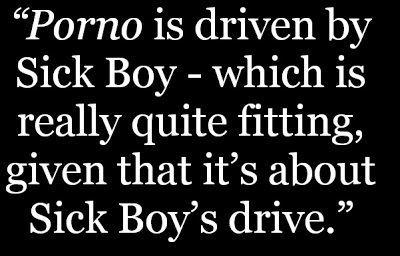 It’s refreshing to follow these events mostly through the eyes of the book’s antagonists, as both
Trainspotting
and its recent sequel,
Skagboys
, settle upon the generally more amiable Renton as their voice. Sick Boy dominates, Welsh’s first person prose allowing the reader to see the proud and prejudiced turning of every cog in his mind, but Begbie gets more exposure than he ever has too, offering a frighteningly narrow perspective that’s constantly flitting between terrifying and comically tragic. The reader can almost see the old psycho blossom into “a deep fuckin thinker” here, believe it or not, as those “blazing coals of enmity” set deep in his skull are finally opened to the fact that he may be the toughest son of a bitch in the old port, but ultimately he’s everybody’s mug; nowt more than a weapon to be wielded.
It’s refreshing to follow these events mostly through the eyes of the book’s antagonists, as both
Trainspotting
and its recent sequel,
Skagboys
, settle upon the generally more amiable Renton as their voice. Sick Boy dominates, Welsh’s first person prose allowing the reader to see the proud and prejudiced turning of every cog in his mind, but Begbie gets more exposure than he ever has too, offering a frighteningly narrow perspective that’s constantly flitting between terrifying and comically tragic. The reader can almost see the old psycho blossom into “a deep fuckin thinker” here, believe it or not, as those “blazing coals of enmity” set deep in his skull are finally opened to the fact that he may be the toughest son of a bitch in the old port, but ultimately he’s everybody’s mug; nowt more than a weapon to be wielded. 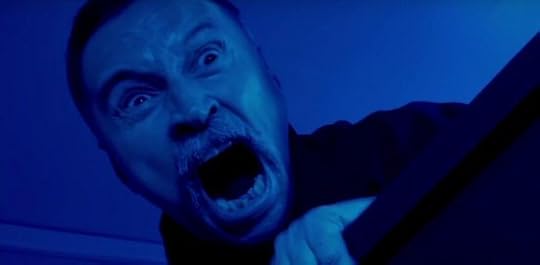
More surprising still is the attention given to non- Trainspotting characters. ‘Juice’ Terry Lawson and Rab Birrell of Glue fame both feature heavily in the first half of the book, though Welsh - much like Sick Boy, ironically - only uses the former as an eager prick, and the latter as a ready-made road into the undergraduate world of the book’s female players. This is a little disappointing as “the best-known aerated waters’ salesman” that Edinburgh ever produced, even when he’s purely there to find wood, is so relentlessly entertaining that he’s sorely missed once he falls by the wayside, while Rab’s storyline just peters out, left in desperate need of a coda. The female contingent, however, are used exceptionally well, from the studious and repressed Lauren all the way up to fiery Reading diva Nicola Fuller-Smith, who is in my view the book’s real star. Porno is, after all, all about the girls.
 “It’s not the penises that are the problem, it’s the attachments; they come in varying sizes alright, varying sizes and degrees of annoyance.”
“It’s not the penises that are the problem, it’s the attachments; they come in varying sizes alright, varying sizes and degrees of annoyance.”I knew a number of girls like Nikki in my university days - outwardly intelligent, independent, ambitious, fit as fuck and don’t they know it, yet silently tortured by well-hidden low self-esteem and jealously that leave them vulnerable to exploitation by the likes of our Mr Williamson. It’s been well reported that Welsh has a keen academic interest in the study of feminism (his MBA’s thesis was on creating equal opportunities for women), and to my delight this is often embodied by his strong female characters, but in a way that eschews cliché or even subverts expectation. Nikki might not be quite as indomitable as one of Welsh’s Wedding Belles, and she may have admittedly poor wanking skills for a part-time masseuse, but any male reader is sure to follow every male character in the book and fall instantly in love with her, and thus find themselves on a rollercoaster ride that takes in arousal, anger and utter vexation before she finally manages to have her cake, eat it, and then throw it up before it can damage her (you’ve got to give it to Welsh, he’s got a gift for squalid metaphor).

Perhaps the most remarkable thing of all about T2 though is that it’s actually quite light on how’s your father. For me, the images of Del Boy and Rodney conjured by the original edition’s blow-up doll cover aren’t all that out of place as, for all its base and shallow cruelty, T2 is quite a hoot. It mischievously toys with Begbie’s sexuality, for instance, running a little with the aspersions cast by the actor who played him on screen by bombarding him with “poof’s porn” in prison and then rendering him impotent upon his release when he tries to get a ride from his new squeeze. Poor old Terry, meanwhile, is treated like he’s in a particularly lewd Carry On film, enjoying only a few R-rated scenes as a “fly-in-shit with all his needs met” before his banjo string snaps, and doctors tell him that a hard-on during the healing process could lead to the amputation of his penis, leading to a hilarious procession of gags involving his female Seven Rides for Seven Brothers co-stars. When things do heat up, though, the man who’s called ‘Welsh’ despite his patent Scottish pedigree holds his own against the dominating mummy porn pioneers of today, vesting Sick Boy and Nikki’s nuclear war of a lovelife with a vividly-described physical passion that certainly wouldn’t have passed censorship had John Hodge’s T2 screenplay followed the book more closely.
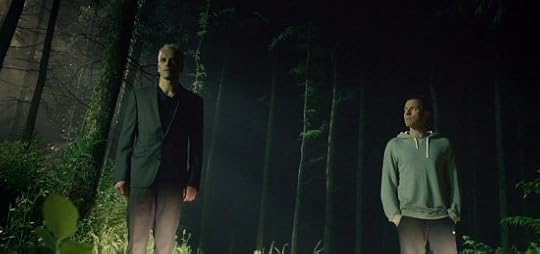 “Sick Boy: vain, selfish and cruel. And that’s his good side.”
“Sick Boy: vain, selfish and cruel. And that’s his good side.”However, T2 was never going to find itself on a pedestal like Trainspotting because Trainspotting was such a specific and insightful thing; a cultural pipe bomb. This is a pity, really, as the erstwhile “Porno” deserves better than second prize - it’s just as thoughtful as its predecessor, in many ways, offering as balanced an appraisal of the sex trade, pornographers and prostitutes as Trainspotting did of hard drugs. And this time around, the appraisal is at least couched in the more familiar guise of a tortuous and relentlessly gripping narrative.
Irvine Welsh’s recently rechristened T2: Trainspotting is now available to download for £4.99 from iTunes or Amazon's Kindle Store.
If this review seems familiar, it’s because I wrote and published it on here in August 2013. If Vintage can republish and rename Porno, then I can do the same with its review. I’ve even tidied up a few bits...
Published on January 27, 2017 12:35
December 21, 2016
Spoiler-Light Film Review | Rogue One: A Star Wars Story directed by Gareth Edwards
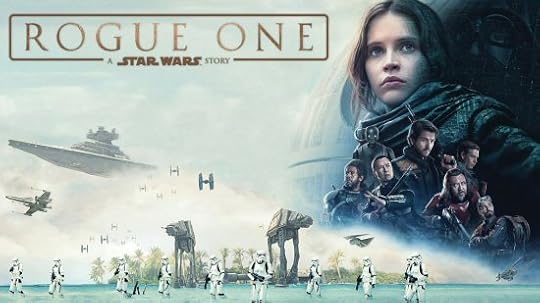
A good title can do a lot for something, and Rogue One is a case in point. It immediately calls to mind Star Wars without having to have “Star Wars” bludgeoned in there (much in the same way that Enterprise said Star Trek perfectly well before CBS hammered on its superfluous prefix in its third season), while at the same time setting the film apart as, quite literally, the first rogue one in the franchise’s live-action cinematic canon. Perhaps most importantly though, it eschews the pulp-fiction serial feel that the likes of The Empire Strikes Back and Attack of the Clones so purposefully engendered, setting the stall for the decidedly gritty tone of Disney’s first Star Wars Anthology tale.
All seven episodes of the Star Wars saga to date have had much in common. Structurally, they all open in the same distinctive manner, share analogous themes, and even adhere to narrative beats as if they were stanzas of the same poem. All Rogue One shares with its forerunners is an opening card grounding it in the same universe – almost everything else is different. Tell-tale swipes and segues are gone, replaced with sharp cuts and text info-dumps. Once forbidden flashbacks are not only permitted, but embraced. Even the duty of scoring the action is given to a new composer, Michael Giacchino (Star Trek) who, whilst paying due homage to John Williams’ immortal themes where appropriate, imbues the movie with a mood that speaks to another genre entirely.
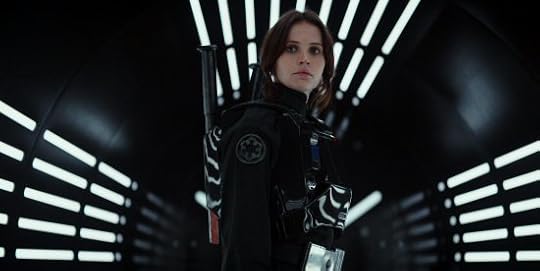
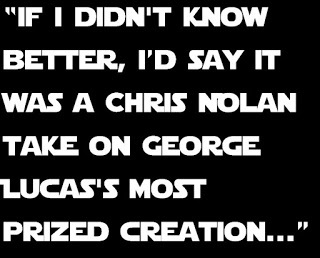 However, what really sets this movie apart from the main saga is its angle. Episodes IV to VI presented heroic rebels battling the evil Galactic Empire. Rogue One presents psychotic terrorists, would-be murderers and a few heroic senators and soldiers looking to bring down the evil Galactic Empire, whose minions range from devoted to enslaved. Indeed, the whole plot turns on the machinations of a conscripted Imperial scientist standing up to his paymasters in the only way that he can. It’s therefore a much greyer, much grittier and much more plausible long ago and far, far away - if I didn’t know better, I’d say it was a Chris Nolan take on George Lucas’s most prized creation.
However, what really sets this movie apart from the main saga is its angle. Episodes IV to VI presented heroic rebels battling the evil Galactic Empire. Rogue One presents psychotic terrorists, would-be murderers and a few heroic senators and soldiers looking to bring down the evil Galactic Empire, whose minions range from devoted to enslaved. Indeed, the whole plot turns on the machinations of a conscripted Imperial scientist standing up to his paymasters in the only way that he can. It’s therefore a much greyer, much grittier and much more plausible long ago and far, far away - if I didn’t know better, I’d say it was a Chris Nolan take on George Lucas’s most prized creation. 
And to say that Rogue One is the first Star Wars flick not to feature the Jedi, it doesn’t disappoint when it comes to its multicultural band of protagonists. From Vader’s twisted mirror Saw Gerrera (of Star Wars: The Clone Wars fame) to tragic Death Star designer Galen Erso, each supporting part is enthralling and distinctive, while the leads positively dazzle. Felicity Jones is superb as Erso’s unruly daughter, Jyn, whom we follow from interred criminal to galactic beacon of hope, and she’s matched every step of the way by Diego Luna’s clearly conflicted Captain Cassian Andor who, more than any other character, embodies both the physical and moral war waging at the heart of the movie. The standouts, however, are Donnie Yen’s Chirrut Îmwe and Jiang Wen’s Baze Malbus, failed guardians of the Whills. One’s blind to the world and the other to the Force, but together they see what must be done.

Of course, Rogue One’s most controversial character wears the face of a dead man. Peter Cushing’s ghost is the face of the Empire here - a blend of CG effects and Guy Henry’s measured performance recreate Emperor Palpatine’s first and only grand moff almost perfectly. Nobody seems to have an issue with the terrifying veracity of this digital resurrection, but questions as to its ethics abound. Is it right? Well, yeah - of course it is. I don’t remember any complaints when Stephen Stanton breathed life back into Tarkin for his CG Clone Wars and Rebels appearances. The only difference here is that the end result is photo-real, imbuing it with an unintended haunting quality that previous efforts have lacked.
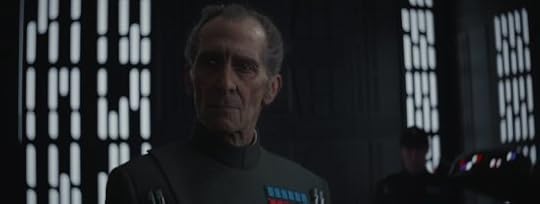
And though his appearances in Rogue One are limited, Darth Vader still manages to enjoy his strongest theatrical appearance to date - at least in a literal sense. Taking a leaf out of Star Wars Rebels’ playbook, Vader is portrayed as an unstoppable force and immovable object; a creature so attuned to the dark side of the Force that his lightning speed and stupefying strength are only outmatched by his ferocious brutality. This is the Vader that I’ve always seen in my mind’s eye - not the lumbering cyborg of Revenge of the Sith or the reined-in, at-heel father of the original trilogy, but the Chosen One of Jedi legend gone bad; the ultimate Sith Lord who can throw a rebel to the ceiling with the flick of one wrist and cleave him in two with the bloodshine lightsaber that he holds in the other. Rogue One doesn’t limit itself to redefining Vader’s prowess in battle either. James Earl Jones delights in delivering deadpan dialogue that’s on a par with The Empire Strikes Back and Return of the Jedi’s most memorable one-liners, and what’s more he does so from within Vader’s obsidian black fortress on Mustafar, which makes its first on-screen appearance here - bacta tank, hooded apostates and all.
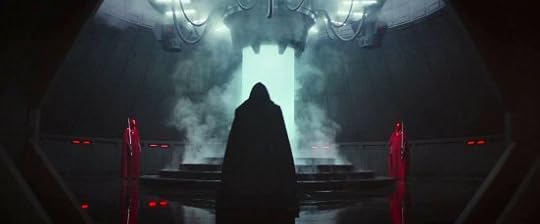
And yet, Rogue One is in some respects even more of a love letter to the original Star Wars movie than even The Force Awakens. Bursting at the seams with cameos and Easter eggs, its very subject matter seeks to dramatise the first film’s opening crawl, making the tapestry of that long-ago galaxy far, far away that much more intricate and alluring. It’s quite apt that, in defiance of every Star Wars saga movie to date, none of the characters here manage to get out the line, “I’ve got a bad feeling about this...”, because it’s hard to see how anyone possibly could. Last Christmas the Force awakened - this year, it’s on fire.
Published on December 21, 2016 10:21
November 21, 2016
Alternative Doctor Who iTunes Cover Artwork: The Patrick Troughton Era
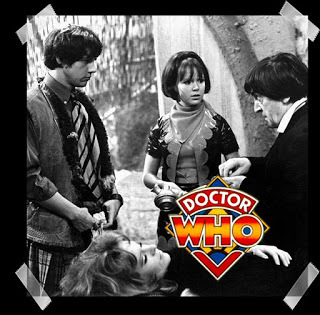 Continuing the series begun last year, below you’ll find more Region 1
Doctor Who
DVD covers repurposed to make replacements for the existing iTunes artwork along with tidied-up versions of the second Doctor’s recent digital releases (the BBC logo isn’t near enough the edge of the image for me these days).
Continuing the series begun last year, below you’ll find more Region 1
Doctor Who
DVD covers repurposed to make replacements for the existing iTunes artwork along with tidied-up versions of the second Doctor’s recent digital releases (the BBC logo isn’t near enough the edge of the image for me these days).As of the time of writing, only The Best of the Second Doctor (The Tomb of the Cybermen, The Ice Warriors, The Krotons and The Seeds of Death), The Power of the Daleks: Special Collection , The Enemy of the World, The Web of Fear and The Krotons are available to buy from iTunes, with the rest no doubt to follow in due course.
To adopt the artwork, save the images below to your computer; go into iTunes; right-click the episode in question and select ‘Get Info’; go to the ‘Artwork’ tab; and then use the ‘Add’ button to integrate the new artwork.
As before, the resolution of the images is limited by that of the source material.
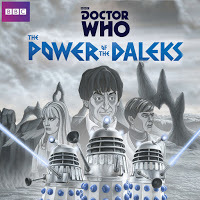
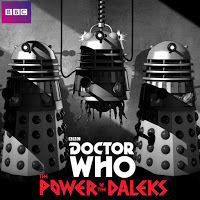
[image error]
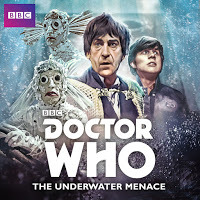
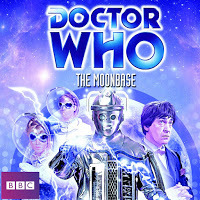
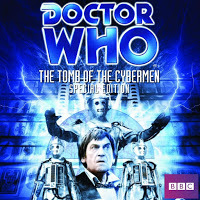
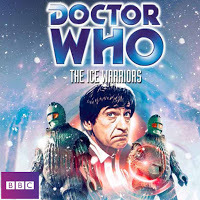
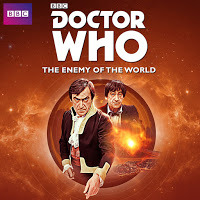
[image error] [image error]
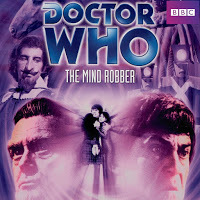
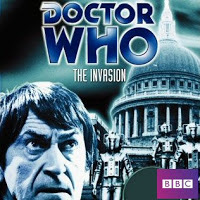
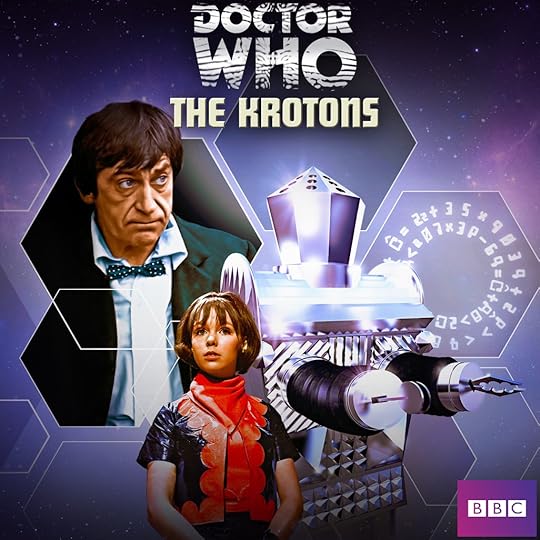
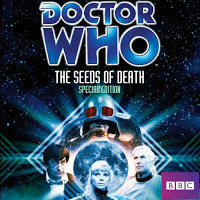
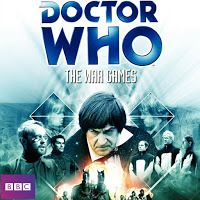
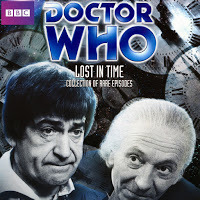
The original Region 1 DVD artwork is copyright © BBC / 2 | entertain. These images are provided for personal recreational use only and no copyright infringement is intended.
Published on November 21, 2016 01:44
September 25, 2016
Rewriting History | Doctor Who: The [TV] Movie on Blu-ray
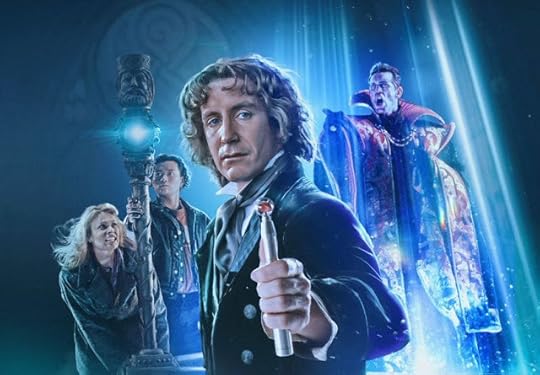
When it was first aired I raved about the Doctor Who TV Movie, before doing it to death with countless VHS viewings. Six years later, it became one of the first DVDs that I owned. With little to no restoration work needed and a whole host of special features ready-made, it was an obvious choice for an early release on the millennium’s new medium. Nine years later, the movie was impressively “remastered, repackaged and reappraised with exclusive new special features” which took a retrospective look at the movie and its significance for its headlining role in the lavish Revisitations 1 DVD box set. Fast-forward another six years, and here I am shelling out another £13.50 for the same film in yet another format – this time around, though, that format is criminally under-utilised.
Part I – What Might Have Been
Admittedly, the most crippling limitation of the TV Movie’s Blu-ray release is conceded by the text on its rear cover: “The feature on this disc has been upscaled from standard definition” - though I feel compelled to point out that the text in question is all of 5mm high. Had I had the time to have done a little online research before purchasing, no doubt I could have found this out, but with two children running circles around me now, even a one-click Amazon Prime purchase is too time-consuming for comfort. Whilst I have nothing against upscaled video, generally speaking, and indeed I prefer my upscaled Russell T Davies-era Doctor Who Blu-rays to their standard-definition DVD counterparts, I have a zero tolerance policy on material that has been lazily upscaled in 1080/50i when it could have been presented in true high-definition. As the TV Movie was shot on film, then it seems all but certain that the original film elements exist to allow for a true HD transfer, as CBS did so spectacularly with Star Trek: The Next Generation and FOX have more recently done with The X-Files (which, note, aired on the same US network as the TV Movie and during the same era).
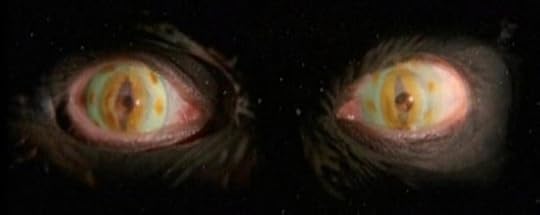
And with no exclusive bonus material, the TV Movie Blu-ray has precious little to offer those who own an upscaling DVD player, The Day of the Doctor and Revisitations 1 beyond the convenience of having both of Paul McGann’s live action appearances as the Doctor collected together on the same disc (though with “The Night of the Doctor” serving as a much more effective lead-in to The Day of the Doctor than it does an era-ender for the eighth Doctor, even the value of this is questionable). It’s also galling that the bonus material on the Blu-ray has been presented in SD. The bulk of this was produced in 2010, and whilst previously it was only released in SD on DVD, I can’t believe that in 2010 the BBC / 2 | entertain were not shooting and producing their material in HD - even the series itself had gone HD a year prior to Revisitations 1.

Given the above, the front cover’s “2 DISCS” boast is just salt in the wound. Yes, there are two discs, but one of them is a 7.95GB DVD, the other is a Blu-ray disc with only 36.3GB of its 50GB capacity having been filled. You don’t need a degree in advanced mathematics to conclude that, if they were intent on selling consumers short with SD extras, 2 | entertain could at least have made this a single-disc release. Not only would this have been more convenient for viewers (as a devotee of voice-activated Apple TV, I get annoyed having to put a single disc in and pressing ‘Play’ before watching something, let alone swap one), it would have been much more environmentally friendly and a damn sight more honest. Hell, a single BD-50 would even have had room left for a decent rendering of the 2003 Shada webcast to boot; perhaps even a Big Finish audio adventure or two too, á la The Davros Collection.
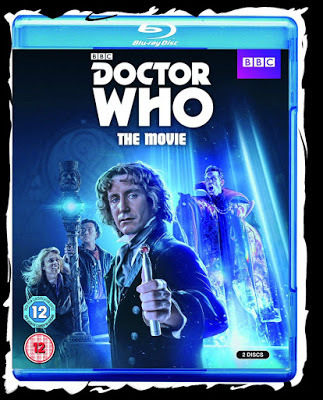 Part II – What Is
Part II – What Is
Yet, believe it or not, this wholly unnecessary and potentially misleading Blu-ray release is worth a punt - but only for those classic Doctor Who fans who don’t already own both The Day of the Doctor Blu-ray and the Revisitations 1 DVD box set. For those nineteen people, and only those nineteen people, this Blu-ray release does offer a lot of content in a little box. As was the case with the one-off Spearhead from Space Blu-ray, the packaging is stylish and sits well with both Spearhead and the RTD-era Blu-rays. Alternatively, those keen to lose it amongst their classic Who DVDs can easily reverse it to display the familiar roundel-framed design. I even have to applaud the continued inclusion of a booklet that gives the same sort of contents information as the much-loved DVD booklets once did, as well an informative little write-up on the movie’s significance - particularly when such things are seldom seen these days. Trying to read the contents on one of my Warner Bros Arrow or Flash Blu-ray seasons involves almost completely dismantling them and pulling out the brainy specs.

Moreover, the 1080/50i presentation is the finest the TV Movie has looked to date. For the most part, the image’s resolution is no sharper than when I play its Revisitations 1 incarnation on an upscaling player, but the text is noticeably clearer and some of the film’s darkest shots don’t suffer as much from artefacts. Most noticeably though, the colours appear much richer, making the film seem much more vibrant than it ever has.
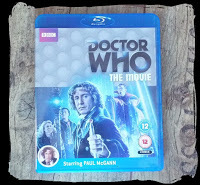 However, like its DVD releases, the presentation continues to suffer from having been sped up from its native 24 frames per second to 25 frames per second. This is
infuriating
given that this flies in the face of Blu-ray conventions
and
isn’t even consistent with previous releases, which suffered from the opposite problem, slowing down UK-produced content to meet those very Blu-ray conventions. Now, every televised Doctor Who story between 1996 and 2008 plays either slightly too fast or slightly too slow on Blu-ray. Wibbly-wobbly, timey-wimey? Speedy-weedy, slowy-wowwy!
However, like its DVD releases, the presentation continues to suffer from having been sped up from its native 24 frames per second to 25 frames per second. This is
infuriating
given that this flies in the face of Blu-ray conventions
and
isn’t even consistent with previous releases, which suffered from the opposite problem, slowing down UK-produced content to meet those very Blu-ray conventions. Now, every televised Doctor Who story between 1996 and 2008 plays either slightly too fast or slightly too slow on Blu-ray. Wibbly-wobbly, timey-wimey? Speedy-weedy, slowy-wowwy!Part III – What Was
A big positive for the release is of course the TV Movie itself, which I’ve always been a keen advocate of. For a one-off Tuesday Night film, it managed to successfully package the Doctor Who concept in a fast-paced and action-packed narrative that should really have blown away audiences Stateside, as well as at back home in Blighty - ‘should’ being the operative word. Rather than accentuate the alien Doctor’s inherent Britishness, which ironically accounts for a lot of the show’s appeal over the pond, the film had USA stamped all over it and through it. I’ve always thought of it as a comic book version of Doctor Who, complete with an origin story (the regeneration) and, of course, the ‘reverse’ / ‘dark mirror’ arch nemesis (the Master). Even the way its parallel scenes so often intercut was redolent of many graphic novels. As a Brit who’d never seen the Doctor step out of the TARDIS into gangland San Francisco before, this was incredibly refreshing for me – but not, sadly, for most Americans.
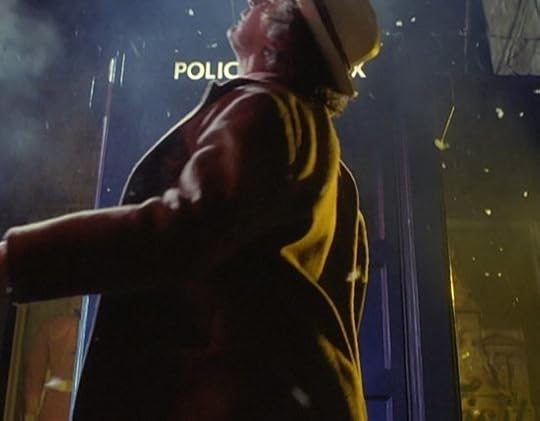
The look and feel of the film was also very striking, even cinematic. Images of the Doctor in the shroud on his knees whilst it stormed outside and the spectacular TARDIS interior were unforgettable, and I was probably one of the few people in the whole world who actually liked John Debney’s pompous title music and score.
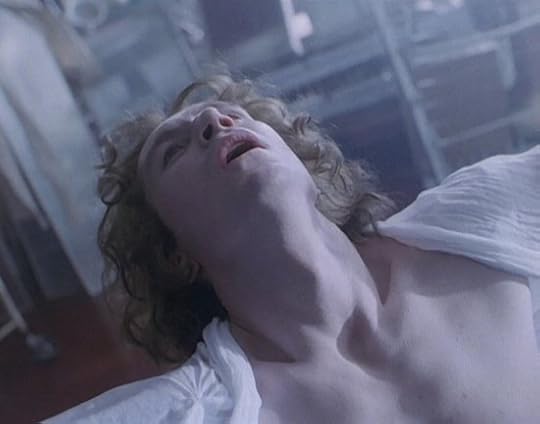
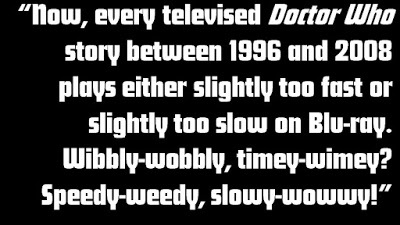 Paul McGann’s portrayal of the Doctor was hard to gauge on such a short performance, but still showed flashes of the promise that has been borne out in his many audio adventures since. He came across as being a very energetic Doctor; more an amalgamation of all of his previous selves than a distinctive new incarnation. Of course, one thing that did set his Doctor apart on screen was his humanity; a concept made explicit by the reveal of his apparent pedigree. The Doctor’s mixed race went a long way to explaining his obsession with his “favourite planet”, Earth, despite being immaterial to the plot, rendering him a “knock-off Spock” as Kim Newman so succinctly put it. Less contentious was the Doctor’s evident clairvoyance, which again smacked of a page one rewrite, but at least did so in a charming fashion.
Paul McGann’s portrayal of the Doctor was hard to gauge on such a short performance, but still showed flashes of the promise that has been borne out in his many audio adventures since. He came across as being a very energetic Doctor; more an amalgamation of all of his previous selves than a distinctive new incarnation. Of course, one thing that did set his Doctor apart on screen was his humanity; a concept made explicit by the reveal of his apparent pedigree. The Doctor’s mixed race went a long way to explaining his obsession with his “favourite planet”, Earth, despite being immaterial to the plot, rendering him a “knock-off Spock” as Kim Newman so succinctly put it. Less contentious was the Doctor’s evident clairvoyance, which again smacked of a page one rewrite, but at least did so in a charming fashion.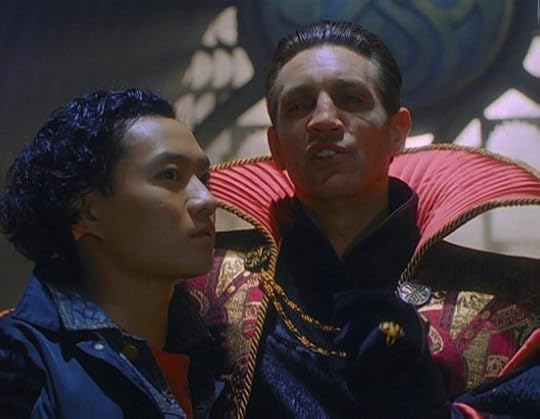
Eric Roberts’ Master was certainly imposing, and very well played, but he was much darker than the Master that we knew and loved from the classic series. The Master that we saw here was an evil reflection of the Doctor – whilst still playful, he was a selfish, hateful creature who thought only inwardly. Part Arnold Schwarzenegger and part Anthony Ainley, Roberts’ Master dominated almost every scene that he was in. To say that he was cast as a result of his repute and nationality as opposed to his suitability for the part, Roberts certainly did a sterling job of capturing both sides of the Doctor’s tortured rival.
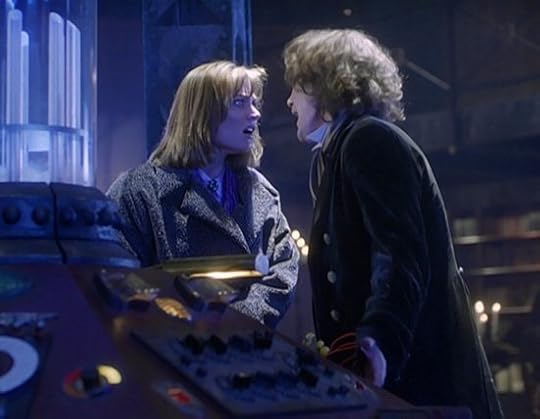
For their part, Grace and Chang-Lee were two interesting nearly-companions. Daphne Ashbrook’s Dr Holloway might have stolen the limelight with that much-dissected kiss – a kiss that nowadays would scarcely be worthy of note – but Chang-Lang was even more remarkable, in my view. There were shades of both Ace and Turlough in the characterisation, only with more of an edge – it wasn’t until right at the death that the former gang member showed his true colours.
All told, whilst this movie may not have been everybody’s perfect idea of Doctor Who, for an eighty-minute slice it was pretty damn good. Abounding as it is with both dark and colourful characters and thrilling set pieces, even today it still stands up as being a brilliant little film - albeit an upscaled and high-pitched 4:3 one.
Part IV – What is… Again
A ‘Revisitation’ was welcome. Revisiting a Revisitation is less so. The only thing that this release offers beyond the freshly-upscaled TV Movie is “The Night of the Doctor” iPlayer minisode that preceded the series’ fiftieth anniversary special. It’s been released before, of course, and on the one Doctor Who Blu-ray that you’re most likely to have even if you only own one, but it’s still hard to knock The Day of the Doctor’s pocket-sized counterpoint.
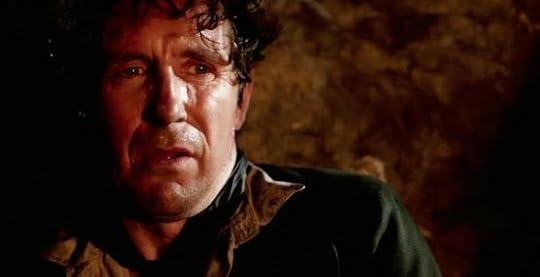
Ostensibly the most incredible thing about this minisode was that it finally provided the eighth Doctor’s ardent following with the regeneration scene that they’d waited more than fifteen years to see. To put this in perspective, you have to consider the sheer enormity of the eighth Doctor’s multimedia empire – his long-lived incarnation shouldered more of the responsibility for keeping the franchise alive during its wilderness years than any other. He enjoyed one of the most successful comic strip runs of any Doctor within the pages of Doctor Who Magazine, while concurrently propping up a groundbreaking, seventy-book strong series of paperbacks. He has now appeared in the equivalent of at a dozen seasons’ worth of television stories in full-cast audio dramas, alongside actresses as renowned as Sheridan Smith and Ruth Bradley, and as loved as India Fisher. For the self-styled “George Lazenby” of Time Lords, the extra-curricular stuff is what really matters – this release’s two telly outings are just the bookends.
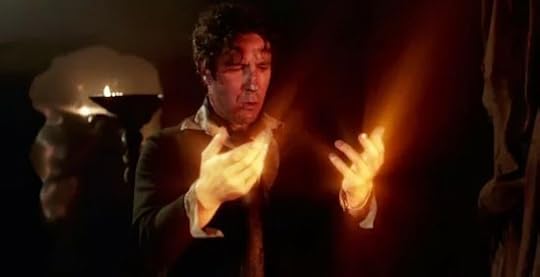
And it wasn’t just any regeneration that “The Night of the Doctor” showed us. Far removed from the innocuous bang on the head that we long thought had done for Old Sixy, or the ravages of old age that killed off the Doctor’s first incarnation, this was a little death that had been speculated about with great fervour ever since Christopher Eccleston’s Doctor alluded to his role in the Last Great Time War, and as such it would have had the impact of la petite mort even without the Sisters of the Flame’s iniquitous, fan-pleasing intervention or the veritable pipe bomb of the eighth Doctor not regenerating into the ninth. As it happened, though, Steven Moffat’s mesmerising master stroke cut right to the heart of a contradiction that had blazed throughout the revived series, irritating everyone from the fans in the forums to those such as Davros sat on the other side of the fictional divide. Whether it was in the name of peace or sanity or both, in the most destructive conflict in the history of creation, the pacifist Doctor committed double near-genocide – and he did so himself. Whatever labels subsequent incarnations would give to Eight’s successor, it was the eighth Doctor who made a conscious choice to eschew the trappings of his carefully-chosen title and be reborn as a warrior capable of ending the Time War. The duress might have been extreme, but nonetheless the “man who never would”, most definitively did.
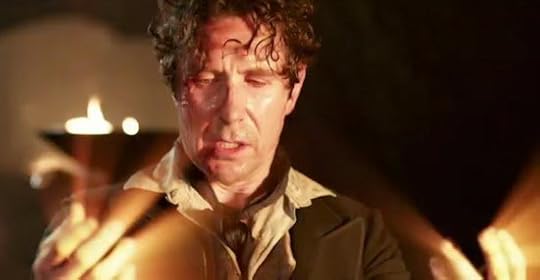
And McGann was so bloody good in this short; so bloody intense. Having become so accustomed to hearing that RP-veiled velvet Scouse in isolation, it really took me aback to actually see him bounding out of the TARDIS, his daft wig and dress-up cowboy costume long-since lost in the trenches of Earth’s Great War. His presence was immediately persuasive, and as the story progressed it became powerful, eventually frightening. “The Night of the Doctor”, far more so than this Blu-ray’s title track, really showcased how brutally short-changed he and we were when it comes to television, while at the same time embracing and celebrating the aural icon that he’s become, as he ran through the most notable of his Big Finish companions in a last-gasp salute.
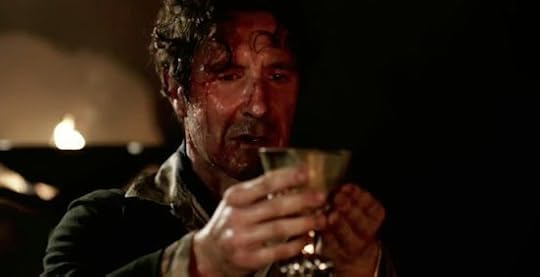
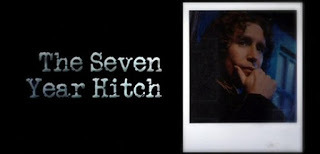 But 6:50 is all we get in true HD, and so as we turn to the bonus material proper, we turn inevitably to SD extras from 2001 and 2010. The unarguable highlight of the release is Ed Handling’s hour-long Seven Year Hitch documentary, which candidly charts Philip Segal’s quest to resurrect Doctor Who; the making of the movie; and its reception. This incredibly thorough piece scrutinises everything from Segal’s pre-cancellation courting of the Beeb to Coast-to-Coast’s Spock gambit and Segal’s desperate deployment of the Steven Spielberg card, even examining Segal’s role in the abandoning of Adrian Rigelsford’s mooted 30th anniversary special, The Dark Dimension, which would have been a Five Doctors-style carnival of companions and monsters led by a fourth Doctor who’d never regenerated - effectively the antithesis of what Segal proposed to do, looking back instead of forwards.
But 6:50 is all we get in true HD, and so as we turn to the bonus material proper, we turn inevitably to SD extras from 2001 and 2010. The unarguable highlight of the release is Ed Handling’s hour-long Seven Year Hitch documentary, which candidly charts Philip Segal’s quest to resurrect Doctor Who; the making of the movie; and its reception. This incredibly thorough piece scrutinises everything from Segal’s pre-cancellation courting of the Beeb to Coast-to-Coast’s Spock gambit and Segal’s desperate deployment of the Steven Spielberg card, even examining Segal’s role in the abandoning of Adrian Rigelsford’s mooted 30th anniversary special, The Dark Dimension, which would have been a Five Doctors-style carnival of companions and monsters led by a fourth Doctor who’d never regenerated - effectively the antithesis of what Segal proposed to do, looking back instead of forwards. 
As well as politics, The Seven Year Hitch also looks at the writing of the TV Movie, which is as frightening as it is interesting. Some early drafts saw the Doctor travelling the universe with Cardinal Borusa, searching for the Doctor’s lost father, Ulysses! Fortunately Spielberg dismissed that particular script out of hand, and English writer Matthew Jacobs was brought in to write his “Doctor Who am I?” interpretation, which ultimately became the story of rebirth that we would eventually see on screen. Even then though, matters were not straightforward, as each interested party insisted on having their say, and Segal’s idea to have incumbent Doctor Sylvester McCoy reprise his role at the start of the movie was met with resistance from all quarters, almost leading to the stunt casting of a celebrity ‘old Doctor’ at one point. The casting of the principal Doctor was no less contentious, with actors as eclectic as Liam Cunningham; Michael Crawford; and even Michael Palin all in the frame before producer Jo Wright forced Segal to watch Withnail and I. The rest, as they say, is history.
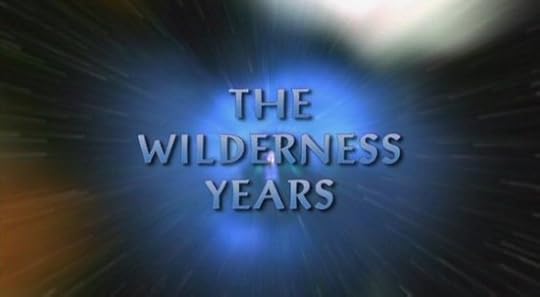
The Wilderness Years is something of disappointment though. Though it does what it says on the tin and looks at how Doctor Who was kept alive during the hiatus, at just under twenty-five minutes everything is skirted over too quickly. Much of the running time is wasted talking about Doctor Who Magazine and its comic strip, which is explored in much greater depth in the Stripped for Action featurette, and the productions of Reeltime; BBV; and even the 30 Years in the TARDIS documentary are given more screen time than the Virgin New Adventures; BBC Books; and Big Finish. For me, it’s the latter trinity that the wilderness years were all about.

Conversely, The Doctor’s Strange Love is a surprisingly enjoyable eleven-minute feature that sees writers Joe Lidster and Simon Guerrier and comedienne Josie Long critique the TV Movie in a refreshingly good-natured manner, hence the Kubrick homage subtitle: How I Learned to Stop Worrying and Love the TV Movie. Lidster draws some intriguing parallels with “Rose” and the revived series generally, whilst Guerrier makes some interesting structural comments that left me thinking how much better the film would have been had he been the script editor. Oddly though, it’s the layman who makes the most piercing observations. As fans of the series, Lidster and Guerrier’s views are largely as one would expect, whereas Long is continually pulling things out of leftfield. Her wry comments about Chang-Lee’s Stockholm Syndrome are especially amusing, for instance.
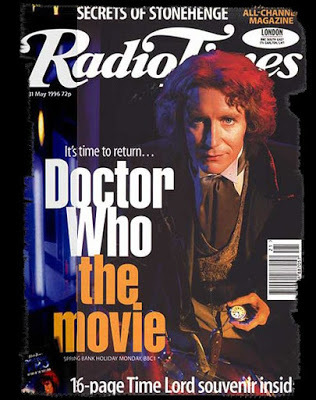 Adrift alone is the second instalment of the Who Peter documentary, “A New Regeneration”, which looks at the support given to the series by Blue Peter during the hiatus and following the series’ return. There is a lot of ground covered here, both before and after the resurrection, though it’s not something that I was terribly interested in.
Adrift alone is the second instalment of the Who Peter documentary, “A New Regeneration”, which looks at the support given to the series by Blue Peter during the hiatus and following the series’ return. There is a lot of ground covered here, both before and after the resurrection, though it’s not something that I was terribly interested in. Furthermore, as Revisitations 1 was the eighth Doctor’s final DVD release, by necessity it had to include his era’s instalments of both Stripped for Action and Tomorrow’s Times, both of which are carried over to the Blu-ray. The former is the apotheosis of the comic strip commentary series; it’s quite clear from watching it that the DVD producers had been desperate to talk about these seminal strips ever since they came up with the idea for Stripped for Action, and rightly so. Whilst I’ve never delved into the eighth Doctor’s graphic adventures, armed as they are with gay companions; Masters; Cybermen; and even nearly-regenerations, the general consensus seems to be that they represent a golden age for the DWM strip. The Radio Times adventures aren’t neglected either - fans of Stacy and Ssard will be pleased to see Transformers legend Lee Sullivan appearing to discuss his work. Tomorrow’s Times is altogether more painful, mind - Nicholas Courtney may make for a great anchorman, but as for the news he’s reading... oh boy.
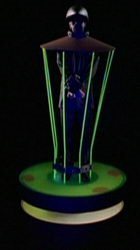 The main feature is complemented by two commentary tracks. The most recent features Sylvester McCoy and Paul McGann and is moderated by the voice of the Daleks and Big Finish executive producer Nicholas Briggs. Whilst this doesn’t contain any shockers the like of that found within Geoffrey Sax’s lone commentary - for instance that he did the Dalek voices last-minute, and no-one in the production team “…knew what they sounded like,” hence their voices sounding so strange - it is far more entertaining than the director’s 2001 effort, possessing the feel of an informal podcast rather than a technical overview of the production. Sax’s original commentary is still preserved on the Blu-ray, however, together with all the other special features from 2001. The isolated score is still present and correct as are the two alternate takes, the BBC1 trailers and all the multifarious publicity material that showed up over here on either the BBC or the Sci-Fi Channel back in 1996. The original interviews, TARDIS tours and ‘electronic press kits’ are then married up with VFX tests from both June 1994 and March 1996, allowing viewers a telling glimpse of what might have been had Amblin’s infamous Spider Daleks seen the screen, as well as VFX build-ups from the actual movie.
The main feature is complemented by two commentary tracks. The most recent features Sylvester McCoy and Paul McGann and is moderated by the voice of the Daleks and Big Finish executive producer Nicholas Briggs. Whilst this doesn’t contain any shockers the like of that found within Geoffrey Sax’s lone commentary - for instance that he did the Dalek voices last-minute, and no-one in the production team “…knew what they sounded like,” hence their voices sounding so strange - it is far more entertaining than the director’s 2001 effort, possessing the feel of an informal podcast rather than a technical overview of the production. Sax’s original commentary is still preserved on the Blu-ray, however, together with all the other special features from 2001. The isolated score is still present and correct as are the two alternate takes, the BBC1 trailers and all the multifarious publicity material that showed up over here on either the BBC or the Sci-Fi Channel back in 1996. The original interviews, TARDIS tours and ‘electronic press kits’ are then married up with VFX tests from both June 1994 and March 1996, allowing viewers a telling glimpse of what might have been had Amblin’s infamous Spider Daleks seen the screen, as well as VFX build-ups from the actual movie. Part V – What Will Be
When I looked at the Spearhead from Space Blu-ray, I noted that, were 2 | entertain minded to do so, entire seasons of the classic series could be released as they stand on Blu-ray in slim, two or three-disc sets with all the individual stories’ respective bonus material preserved thereto. Little did I realise that they’d end up going with a bastardised, money-spinning take on the idea, essentially just re-releasing the Revisitations 1 version of the TV Movie together with “The Night of the Doctor” as a poor man’s “ Complete Eighth Doctor ” with only a miniature disclaimer to dispel the common consumer misapprehension that Blu-ray = HD.
Thankfully the future lies in downloads, as the Beeb have finally realised, with its fledgling BBC Store proudly preparing to unveil its long-awaited reconstruction of The Power of the Daleks… and in full-colour, 16:9, HD too. I’ve a feeling there’ll be a less venomous Who review on the way very soon...
Doctor Who: The Movie is available on – upscaled! – Blu-ray from various online retailers, with today’s cheapest being Amazon, who are charging £13.50 with free delivery on orders over £20.00.
Published on September 25, 2016 11:40
March 8, 2016
TV Review | Gotham developed by Bruno Heller
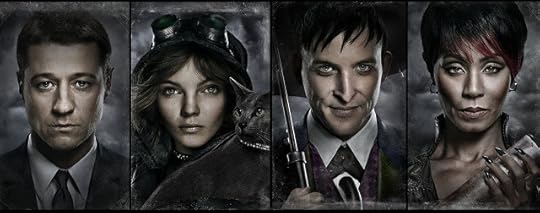
 When Frank Miller rebooted the Batman comic book in 1987 with his seminal Year One story arc, he did more than just set the standard – and the style – for almost every iteration of the Dark Knight that would follow. An inspired shift of emphasis allowed us to witness the coming of the Batman through the eyes of a young and disenchanted Jim Gordon; a terrifying, “dark deco” reinvention of Gotham made the city every bit as crucial a character to the legend as the corrupt officials and career criminals that it harbours. Christopher Nolan’s Dark Knight trilogy was unashamedly grounded in the style and the spirit of Year One, and as a result it’s generally considered to be the apex of the whole franchise – a critical and commercial success that may never be bettered on the silver screen. Rather than try, DC have turned over the reins to Bruno Heller so that he may stretch Miller’s conceit to its natural limits in a television series built upon everything that made Year One such an influential piece of work, and more besides. Imagine Batman Begins, only twenty-six-hours long and counting instead of two hours twenty. What we have here is total immersion television: the king of comic-book television for the box-set-binge age.
When Frank Miller rebooted the Batman comic book in 1987 with his seminal Year One story arc, he did more than just set the standard – and the style – for almost every iteration of the Dark Knight that would follow. An inspired shift of emphasis allowed us to witness the coming of the Batman through the eyes of a young and disenchanted Jim Gordon; a terrifying, “dark deco” reinvention of Gotham made the city every bit as crucial a character to the legend as the corrupt officials and career criminals that it harbours. Christopher Nolan’s Dark Knight trilogy was unashamedly grounded in the style and the spirit of Year One, and as a result it’s generally considered to be the apex of the whole franchise – a critical and commercial success that may never be bettered on the silver screen. Rather than try, DC have turned over the reins to Bruno Heller so that he may stretch Miller’s conceit to its natural limits in a television series built upon everything that made Year One such an influential piece of work, and more besides. Imagine Batman Begins, only twenty-six-hours long and counting instead of two hours twenty. What we have here is total immersion television: the king of comic-book television for the box-set-binge age.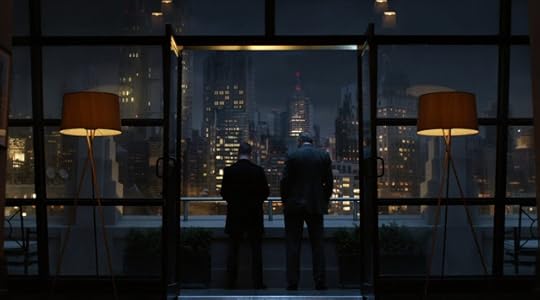
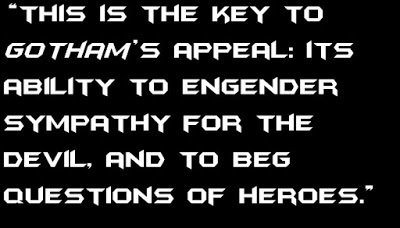 Yet Gotham is more than another comic-book show. In conceiving it, Heller cherry-picked the best features of several popular genres and skilfully combined them to create a whole that’s not merely more than the sum of its parts, but something transcendent. Gotham’s comic-book heart is couched in the guise of the time-tested police procedural. However, rather than investigate run-of-the-mill murderers, homicide detectives Bullock and Gordon pursue nascent supervillains and budding monsters, unravelling corruption and conspiracies as they go. There are flavours of influential shows as sundry as
The X-Files
and The Sopranos, with all the thrills and chills thereto, yet Gotham stands very much alone, defined as much by its unique style as its substance.
Yet Gotham is more than another comic-book show. In conceiving it, Heller cherry-picked the best features of several popular genres and skilfully combined them to create a whole that’s not merely more than the sum of its parts, but something transcendent. Gotham’s comic-book heart is couched in the guise of the time-tested police procedural. However, rather than investigate run-of-the-mill murderers, homicide detectives Bullock and Gordon pursue nascent supervillains and budding monsters, unravelling corruption and conspiracies as they go. There are flavours of influential shows as sundry as
The X-Files
and The Sopranos, with all the thrills and chills thereto, yet Gotham stands very much alone, defined as much by its unique style as its substance.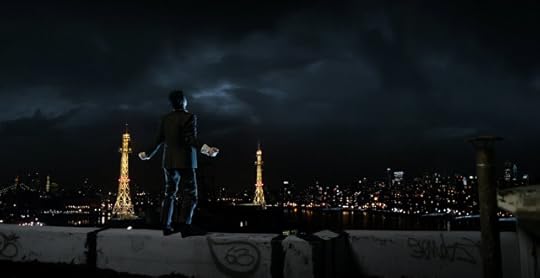
A beautiful programme to look at, the steely blues of Gotham engender an ageless, graphic-novel feel as dense as the fog that darkens its alleys. Forties’ architecture, seventies’ cars, eighties’ music, nineties’ computers, noughties’ mobile phones… the city’s abundant anachronisms don’t beggar belief, but help the viewer to suspend it. Gotham City is its own world, in its own time, and this sense of splendid isolation only serves to heighten the stakes as the first moves are made in the war for control of it – or, perhaps, the war to save it.

What initially drew me to Gotham was the promise of exploring the back stories of Bruce Wayne and his DC Universe enemies and allies in a level of detail never before attempted, but what held there was Detective Jim Gordon. As the show’s central figure, it shouldn’t be surprising that he’s its most fascinating character, but given the company that he keeps, it really is. Ben McKenzie, who’s no stranger to the turf, having played Batman in the 2011 animated adaptation of Year One, imbues his interpretation of Gordon with an unyielding sense of honour and justice. He won’t be bought, he won’t be sold, and he won’t be coerced. He’s the viewers’ champion throughout; even the city’s champion. Surrounded by shades of grey and obsidian black, Gordon is a clean-cut, glaring bright white - and Gotham’s the story of how the fates conspire to have him dirty his hands and become the man who will embrace a vigilante.
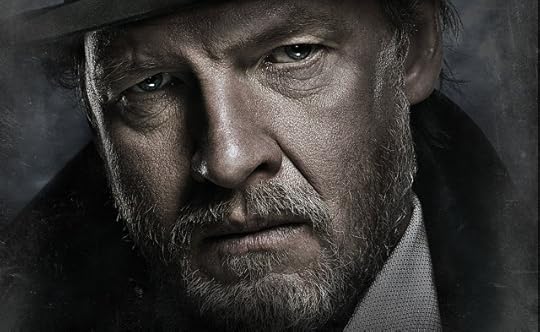
Gordon’s GCPD partner, the oafish Harvey Bullock, is initially cast as Gordon’s opposite. Compromised and weathered, Donal Logue’s character represents everything that Gordon sees as being wrong with Gotham City; he embodies all the wrongs that Gordon is looking to right. But, as the season progresses, we see that Bullock is actually a time-delayed reflection of Gordon – he was once a white knight too, until the city knocked all the heroism out of him. It’s to Gordon’s credit that, just as the city begins to change him for the worse, he stirs the latent valour in his bedraggled partner. The dynamic calls to mind Life on Mars’ Gene Hunt and Sam Tyler – each man brings the other closer to balance.
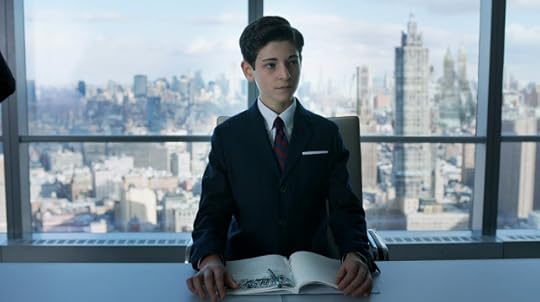
The narrative catalyst for the first season is the murder of Thomas and Martha Wayne, which almost immediately introduces our newly-minted Detective Gordon to the teenage Bruce Wayne. With Heller following Bruce’s story from such a young age, I was surprised at how often and how heavily plots turn around the orphaned billionaire. Anyone concerned about Gotham “doing a Phantom Menace ” shouldn’t be – Bruce is brilliantly, often disturbingly, drawn by the scripts, and fifteen-year-old David Mazouz brings an unsettling intensity to the part that calls to mind Christian Bale’s definitive turn in the Dark Knight movies. At the same time, though, here we get to see an aspect to Bruce that, inevitably, both Year One and Batman Begins skipped over: the vulnerability and doubt between boy and man. Much of the time, particularly towards the end of the season, you find it hard to remember that Bruce is just a kid, he’s so redolent of his future self. Indeed, the “World’s Greatest Detective” moniker has never fit better than it does here. But then, in an instant, he’ll made a fool of himself over Selina Kyle’s laissez-faire advances, or fall foul of a school bully, and he’s just a frightened little orphan boy again. It’s a gripping, layered portrayal - and utterly, utterly credible.
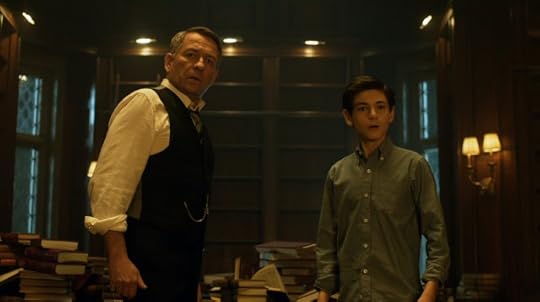 “You’re a war dog, Alfie. You’re a cold-blooded, lethal war dog, is what you are.”
“You’re a war dog, Alfie. You’re a cold-blooded, lethal war dog, is what you are.” A great deal of the credit for Mazouz’s success here is attributable to the show-stealing actor that he has to play off: Sean Pertwee (ID, Alan Partridge: Alpha Papa, Elementary). The son of the late third Doctor plays an Alfred Pennyworth that’s unlike any other interpretation that I’ve seen on screen, and not just because of his comparative youth. Taking a lead from the Alfred depicted in Earth One, Pertwee’s ex-SAS, hard-as-nails but twice as caring butler is more surrogate father than he is confidante and manservant. Pertwee vests the part with a stylish sense of dry humour; his fifty-something Alfred is always sharp-witted and never ruffled, and he’s equally adept at smooth-talking and arse-kicking when it comes to dealing with the city’s underworld. In short, he’s fucking cool, and if I were to single out one character for especial effusive praise, it would be my fellow countryman.
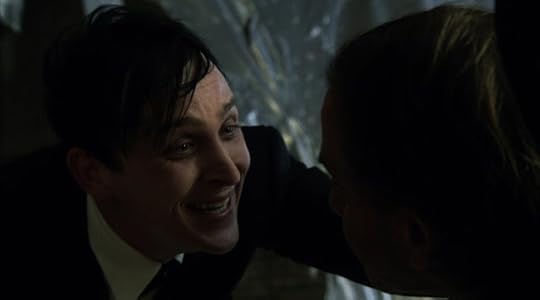
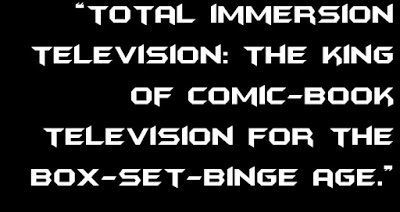 The villain’s origin stories don’t disappoint either, which is particularly exciting when you consider that by the end of the first season only the surface has been scratched. Heavily nurtured by the first season is Robin Lord Taylor’s Oswald Cobblepot – the once and future Penguin whose rise, it seems, predated that of the Caped Crusader quite considerably. Introduced as “umbrella boy” to a mid-tier mobster, Gotham’s first year follows the evil mastermind as he expertly engineers a gang war that will see him claim the mantle of “King of Gotham” when all his enemies wipe each other out. As was the case with Christopher Nolan’s supervillains, Gotham’s production team have excelled in creating a character that, whilst heightened, is grounded in reality. He’s not a misshapen, sewer-dwelling monstrosity as Tim Burton and Danny DeVito would have you believe; he’s a wounded, vicious and supremely intelligent young man whose ambition is tempered by patience. Taylor’s performance is so dazzling at times that you almost forget that he’s an antagonist; Gotham City is such a dark place that a scoundrel like the Penguin, an underdog of a baddie with a little bit of charm and almost plausible veneer of empathy, can become any episode’s anti-hero. To me, this is the key to Gotham’s appeal: its ability to engender sympathy for the Devil, and to beg questions of heroes.
The villain’s origin stories don’t disappoint either, which is particularly exciting when you consider that by the end of the first season only the surface has been scratched. Heavily nurtured by the first season is Robin Lord Taylor’s Oswald Cobblepot – the once and future Penguin whose rise, it seems, predated that of the Caped Crusader quite considerably. Introduced as “umbrella boy” to a mid-tier mobster, Gotham’s first year follows the evil mastermind as he expertly engineers a gang war that will see him claim the mantle of “King of Gotham” when all his enemies wipe each other out. As was the case with Christopher Nolan’s supervillains, Gotham’s production team have excelled in creating a character that, whilst heightened, is grounded in reality. He’s not a misshapen, sewer-dwelling monstrosity as Tim Burton and Danny DeVito would have you believe; he’s a wounded, vicious and supremely intelligent young man whose ambition is tempered by patience. Taylor’s performance is so dazzling at times that you almost forget that he’s an antagonist; Gotham City is such a dark place that a scoundrel like the Penguin, an underdog of a baddie with a little bit of charm and almost plausible veneer of empathy, can become any episode’s anti-hero. To me, this is the key to Gotham’s appeal: its ability to engender sympathy for the Devil, and to beg questions of heroes.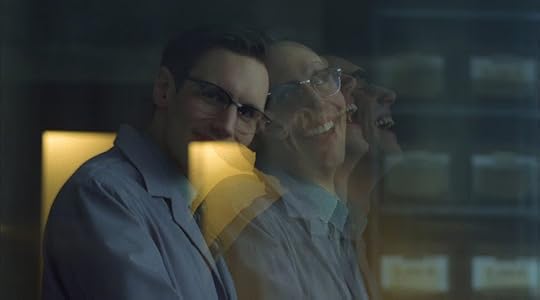
Whilst the focus of the show’s first season may be the Penguin’s Machiavellian rise to prominence, other big Batman-era players are introduced too – some in familiar guises, some not. Cory Michael Smith’s riddling Ed Nygma steals almost every scene that he’s in, and though Camren Bicondova lacks Catwoman’s traditional appeal, she more than makes up for this through her fascinating mentor / student relationship with the young Bruce Wayne and her hard, impenetrable façade. Meanwhile, Nicholas D’Agosto (Heroes, Masters of Sex) is excellent as bold attorney Harvey Dent, whose personality issues, it seems, pre-date the scarring of half his face. The street-dwelling Ivy Pepper is also a recurring character, albeit an understated one, while the episode “Viper” subtly sets up the coming of Bane and the “The Scarecrow” more explicitly introduces its eponymous villain. Perhaps most promisingly of all, though, “The Blind Fortune Teller” stars a pale, deranged maniac with a frenzied laugh that’ll give you goosebumps. It’s as if he’s channelling Heath Ledger.
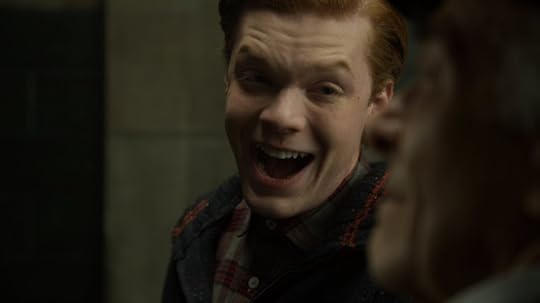
Yet the first season isn’t so much about the up-and-coming Batman-era villains, but the old guard of mobsters who hold Gotham City in their fat and psychopathic fists. Opposing mafia bosses Carmine Falcone and Sal Maroni are marvellously conceived and realised, particularly the former whose gentle demeanour belies his startling ruthlessness. As the season progresses, John Doman makes Falcone almost likeable – as Gordon puts it, he’s the city’s “least worst option”, but it actually cuts a little deeper than that. Maroni is ambitious, cruel and cowardly; this version of Falcone is an old-school, “honour among thieves” sort of crook with a strong sense of respect, and even romance. He genuinely believes that what he does is for the greater good of Gotham, and what I find fascinating is that it probably is - at least for now.
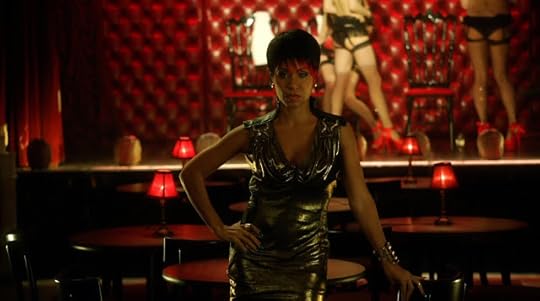
The real underworld standout though is Fish Mooney, Gotham’s answer to Harley Quinn. Custom-created for the series, Fish’s season-long battle with her erstwhile “umbrella boy” is probably the first year’s most compelling storyline. Initially portrayed as a seductive but lethal “under-boss”, as Fish’s fortunes change, so does the audience’s attitude towards her. Thanks to some very clever writing and a precise, nuanced performance from Jada Pinkett Smith (The Matrix Reloaded, The Matrix Revolutions), Fish turns from loathed adversary into champion of the oppressed – a woman who garners viewers’ respect, if not their allegiance.
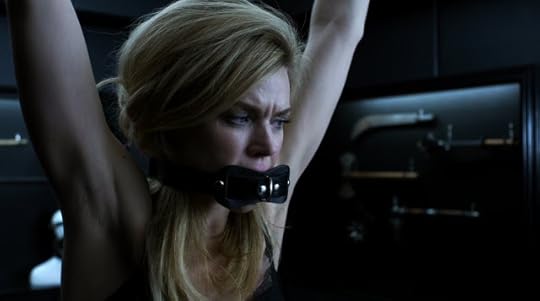
On the other side of femme fatale divide, the lovelife of Jim Gordon is not without its surprises. Erin Richards’ empty beauty, Barbara Kean, quickly becomes a much more riveting character than she initially appears, the production team bringing in animated series stalwart Renee Montoya as a love rival for our hero, before breaking totally new ground towards the season’s end when another former Heroes star makes a chilling appearance. Stargate SG•1 star Morena Baccarin also impresses as the gung-ho Arkham Asylum doctor, Leslie Thompkins. Barbara’s opposite in every possible way, Lie challenges the straight-laced Jim’s apparent double standards as frequently as she does Gotham’s criminally insane. I don’t know about Jim, but I’m in love.
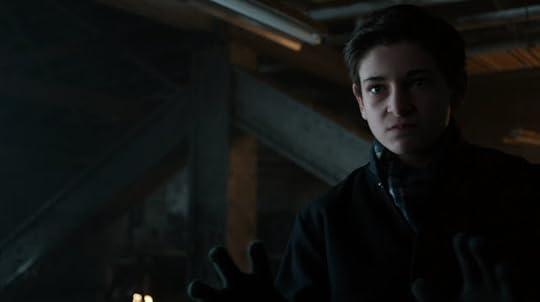
And so, though the age of the comic-book movie is undoubtedly far from over, we now seem to be enjoying the golden age of comic-book telly. Arrow, Agents of SHIELD, The Flash, and now Gotham – a comic-book show with more than a twist; one that has the potential to run until David Mazouz is big enough to don a cape and cowl, and indeed beyond.
The first season of Gotham is available to download in 1080p HD from iTunes for £29.99. A Blu-ray is also available boasting similar bonus material. Today’s cheapest retailer is the Hive, which is selling the four-disc set for £17.29 including free delivery. You can keep up to date with the ongoing second season of Gotham with an iTunes series pass (£34.99 for 1080p HD).
Published on March 08, 2016 04:22
E.G. Wolverson's Blog
- E.G. Wolverson's profile
- 52 followers
E.G. Wolverson isn't a Goodreads Author
(yet),
but they
do have a blog,
so here are some recent posts imported from
their feed.



